Please note: the Ministry of Education and Science recommends for the 2017/2018 academic year include educational events dedicated to the year of ecology in education and socialization programs(2017 has been declared the year of ecology and specially protected natural areas in the Russian Federation).
We recommend that teachers of grades 1-11 and preschool teachers, together with their children, take part in international competition "Laws of Ecology" dedicated to the year of ecology. Participants of the competition will test their knowledge of the rules of behavior in nature, learn interesting facts about animals and plants listed in the Red Book of Russia. All students will be awarded colorful award materials, and teachers will receive free certificates of training for participants and prize-winners of the international competition.
Diagnostics of readiness for school, regulatory support, requirements, methods of the Federal State Educational Standard
Library
materials
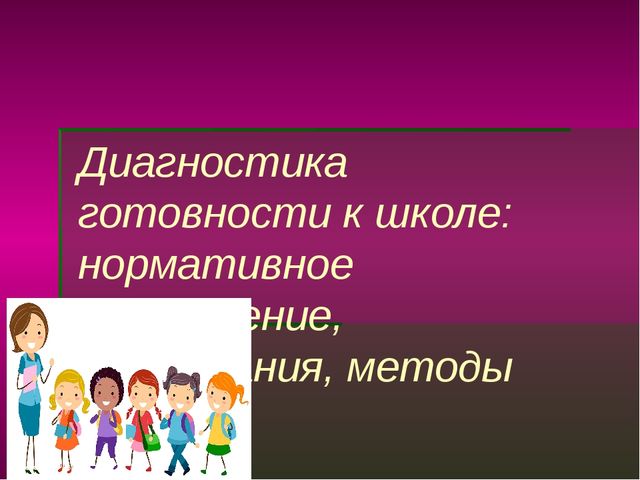
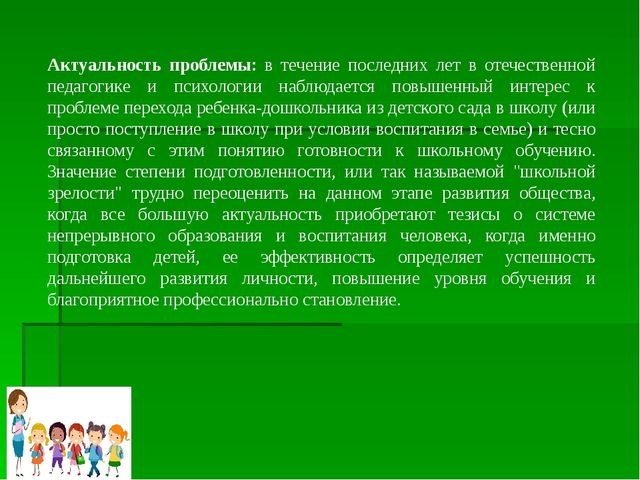
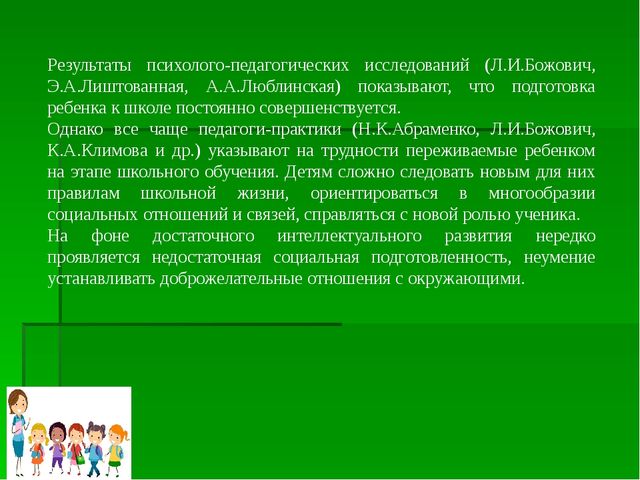
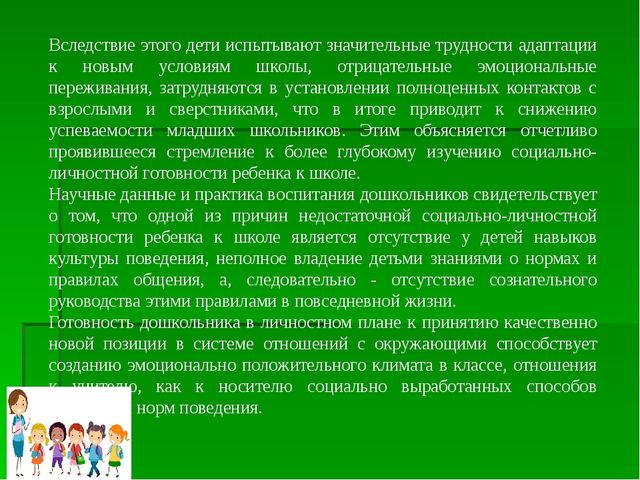
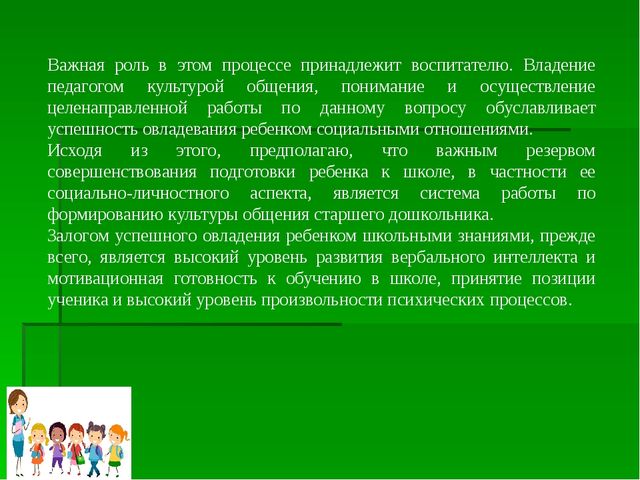
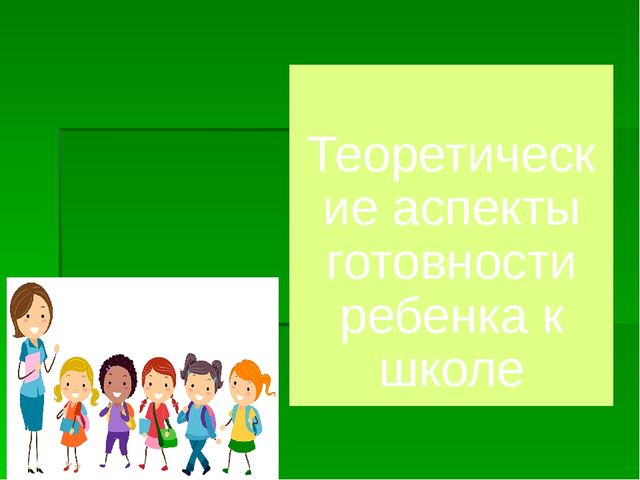
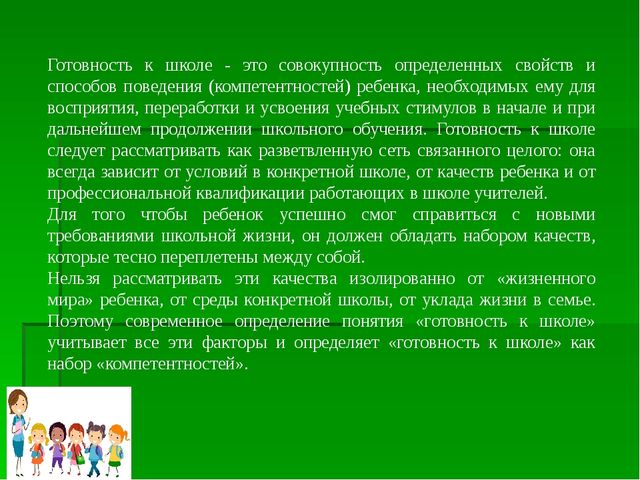
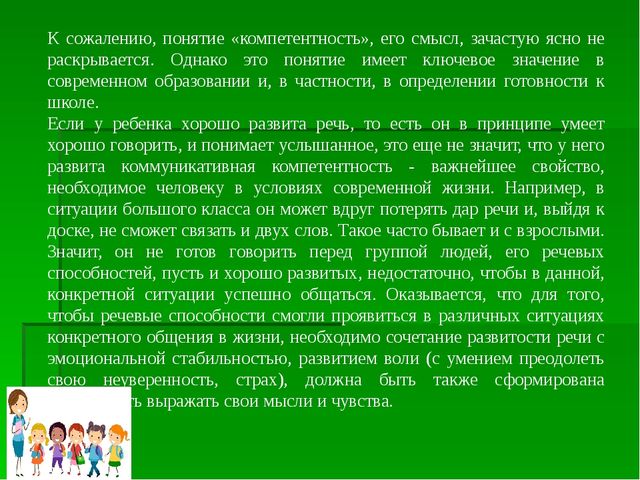
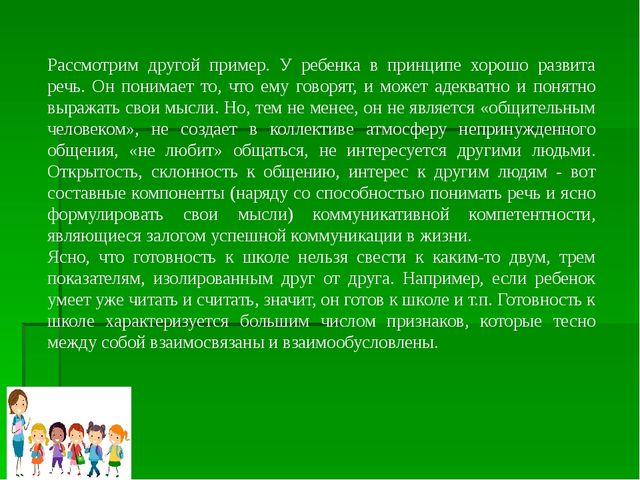
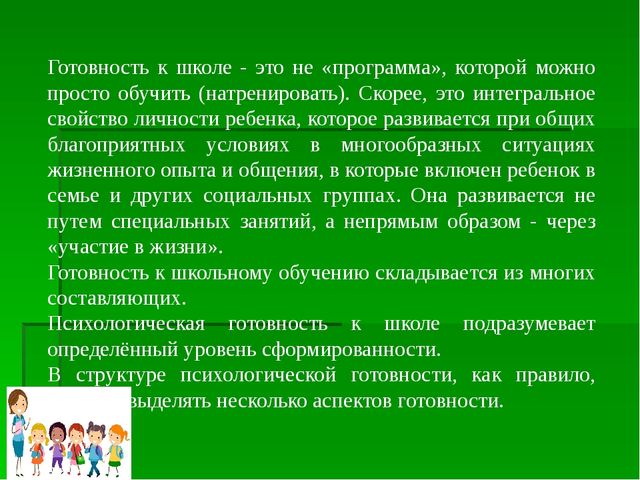
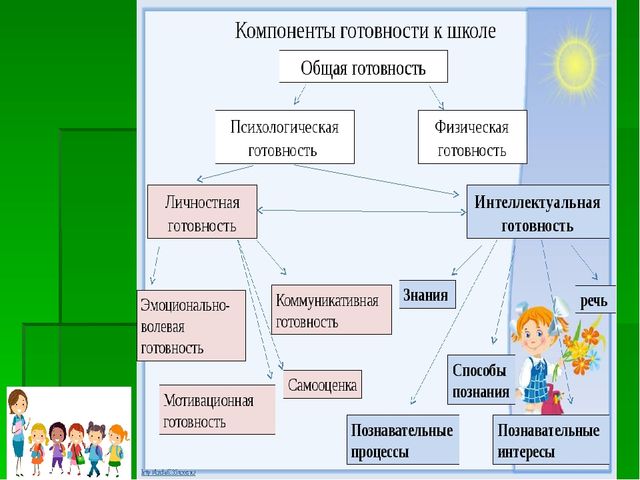
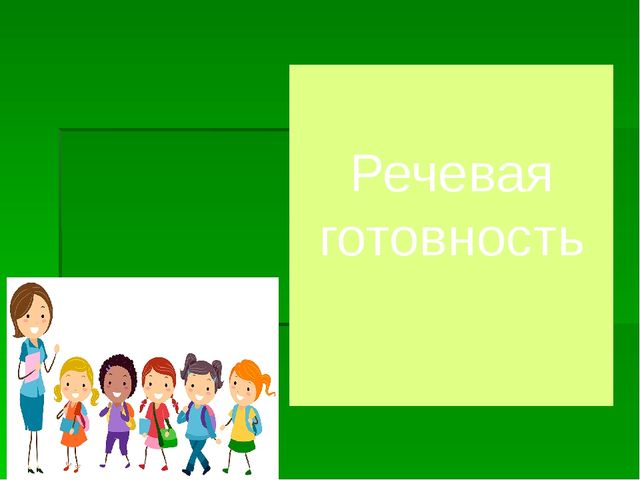
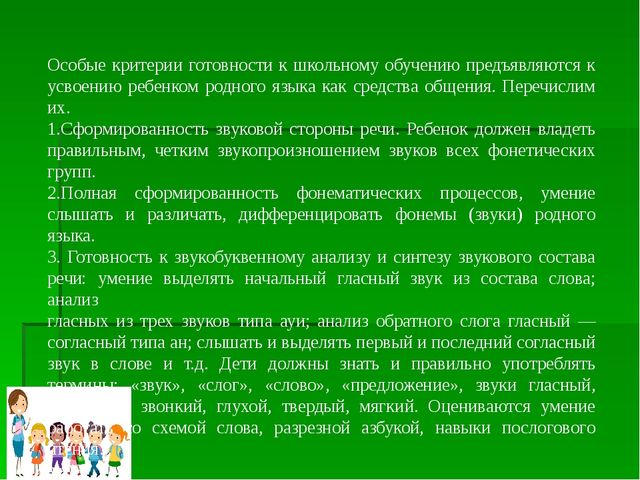
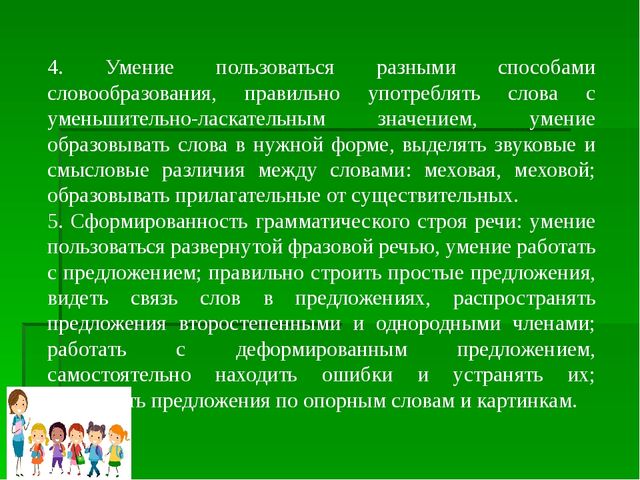
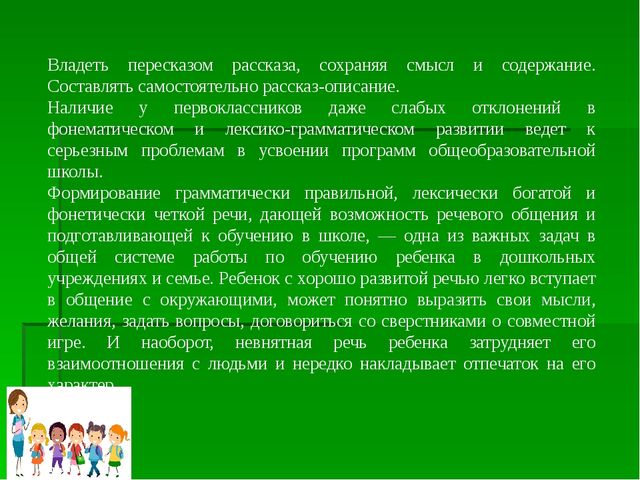
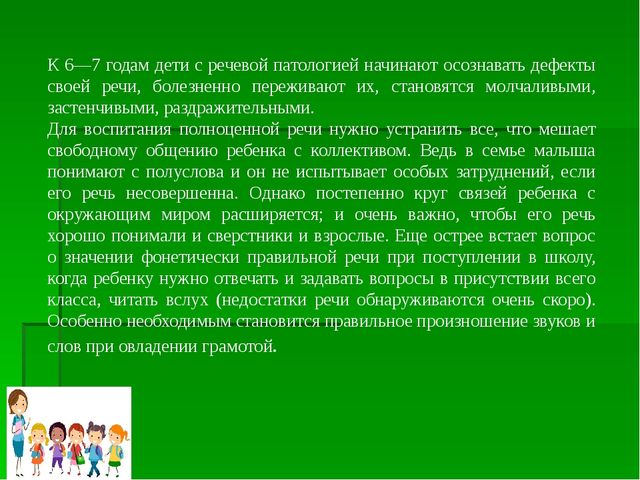
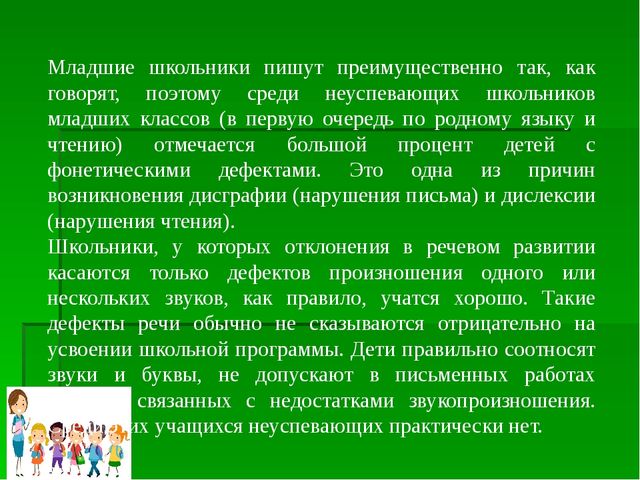
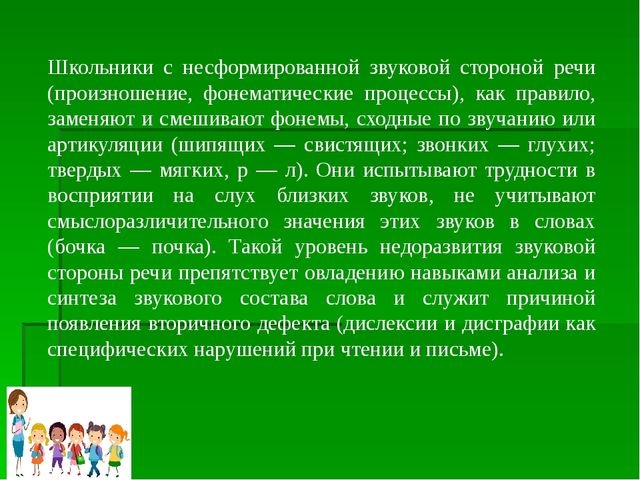
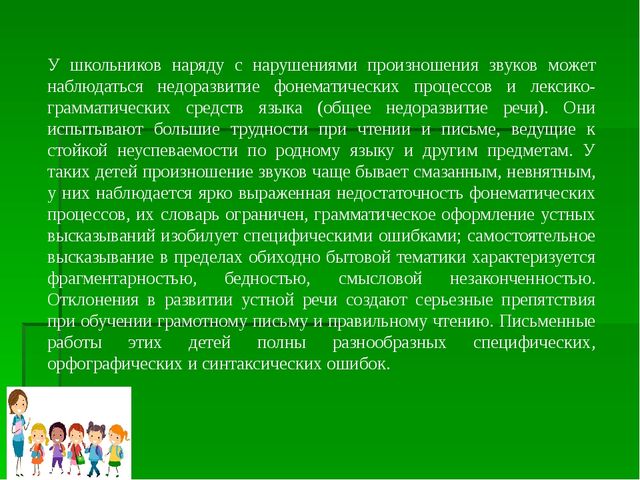
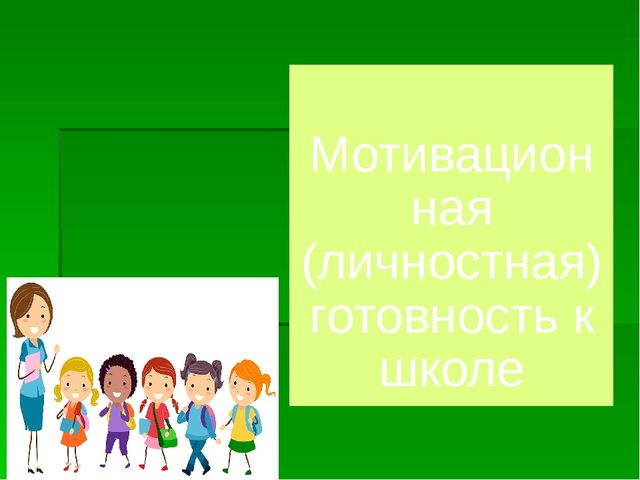
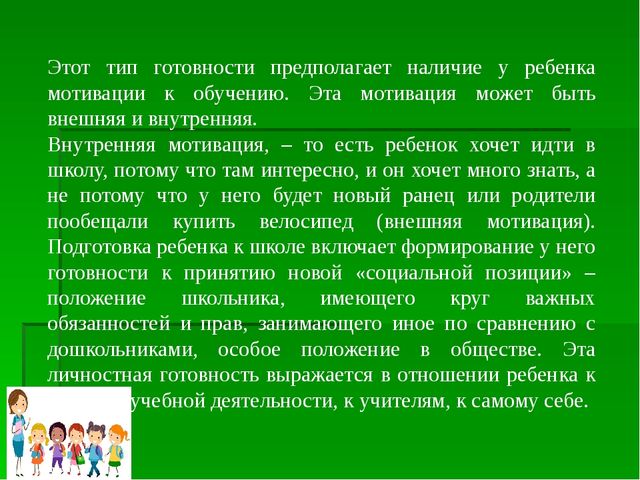
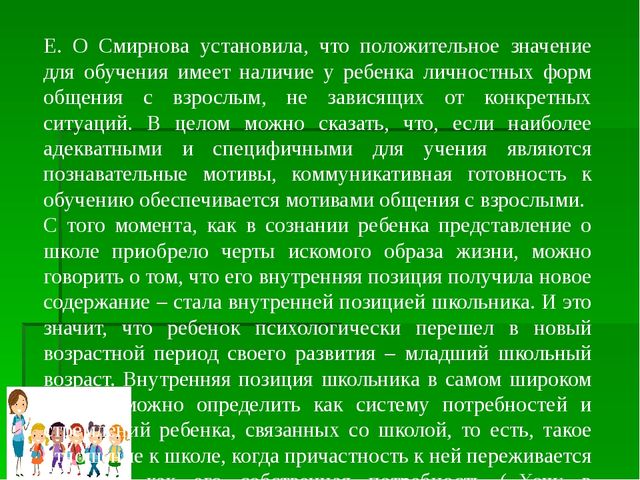
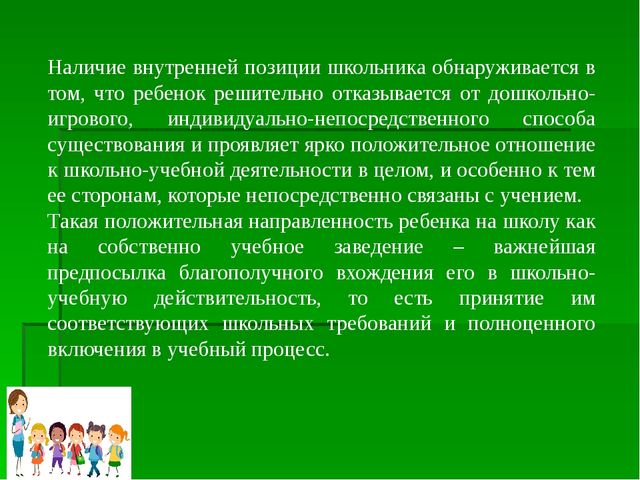
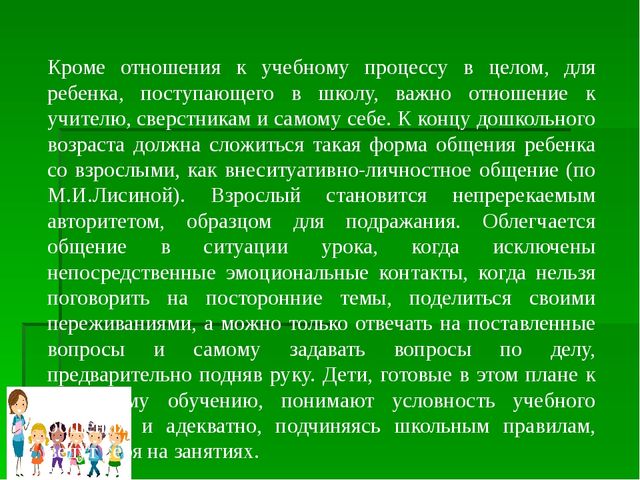
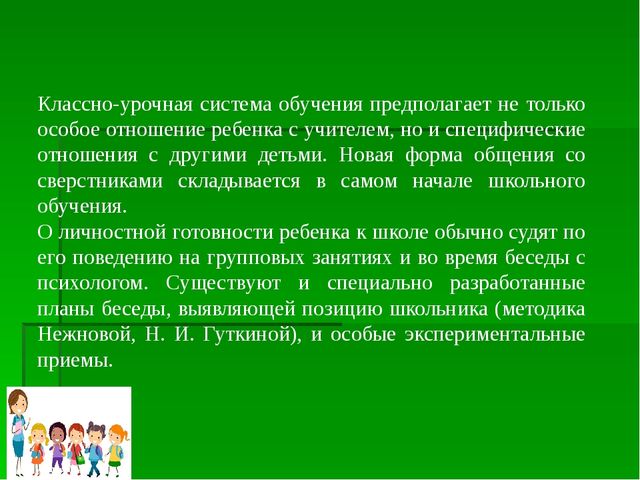
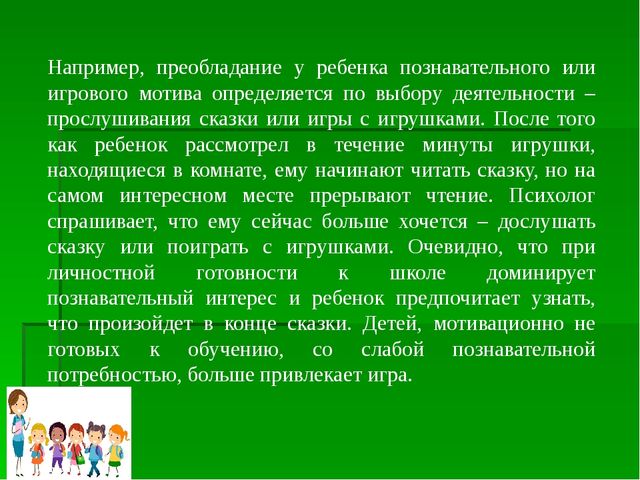
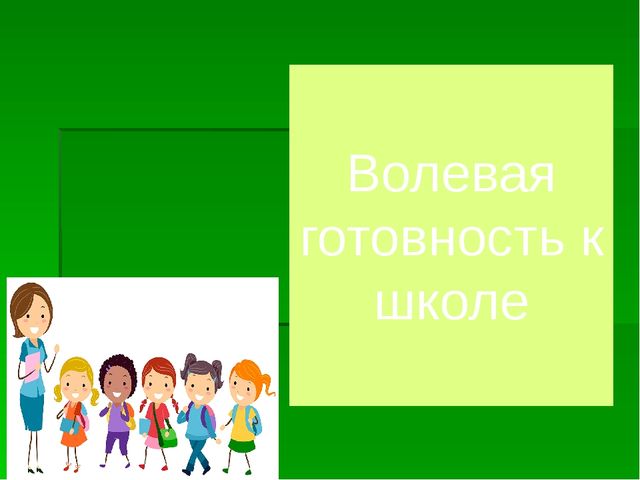
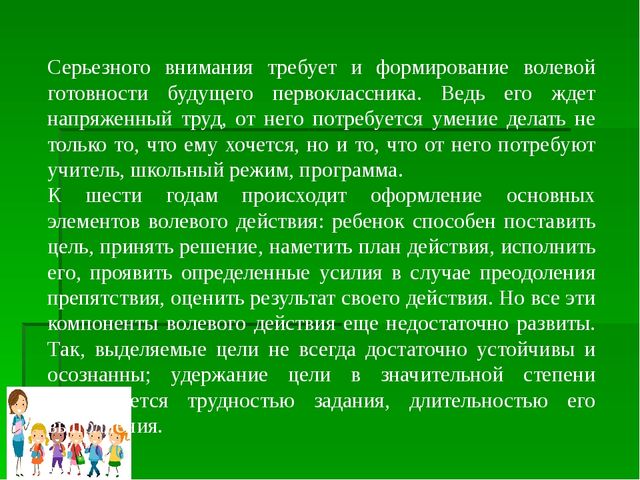
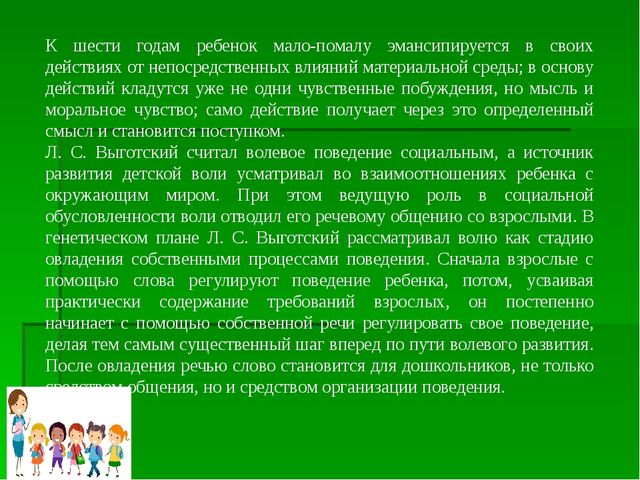
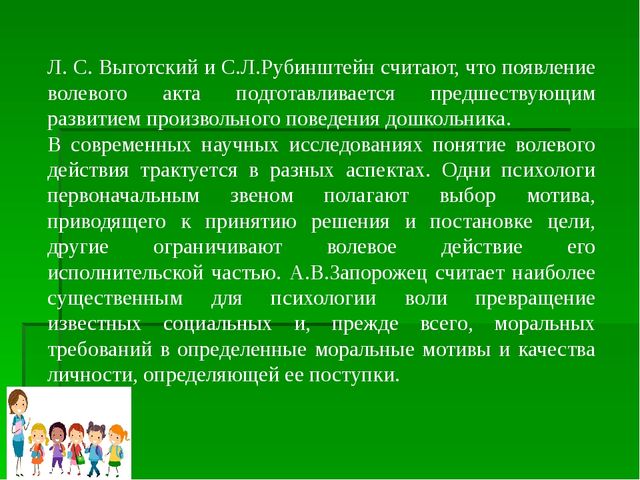
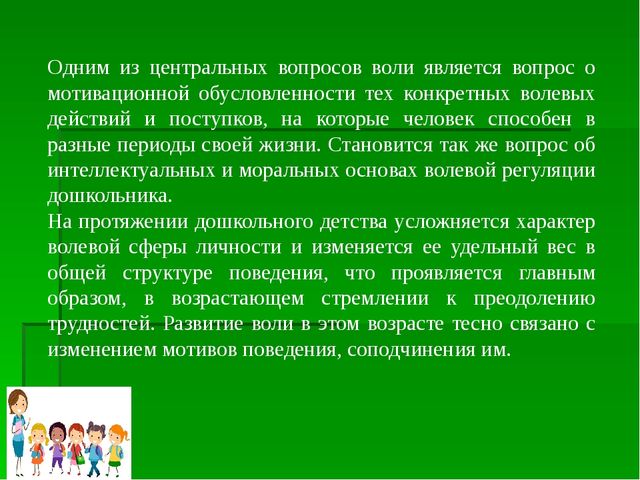
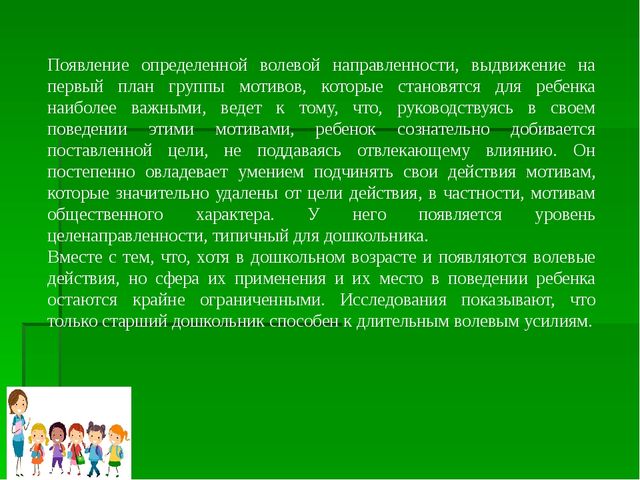
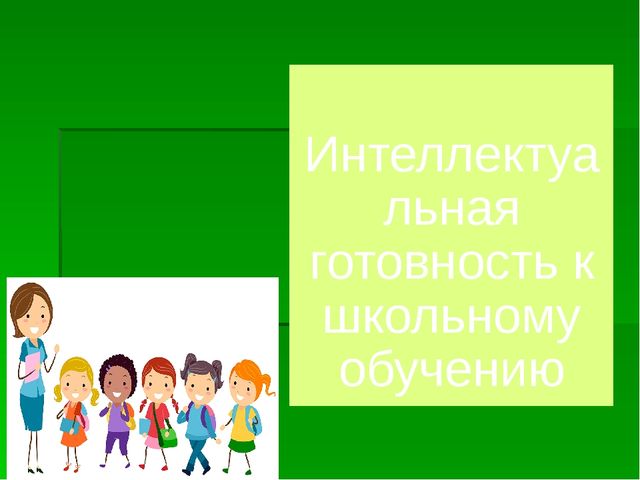
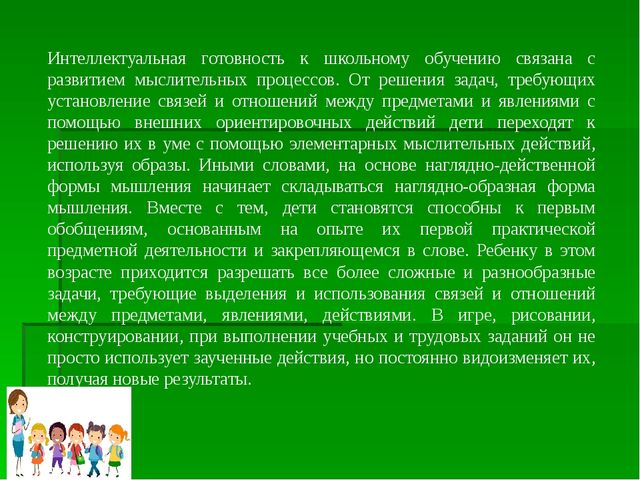
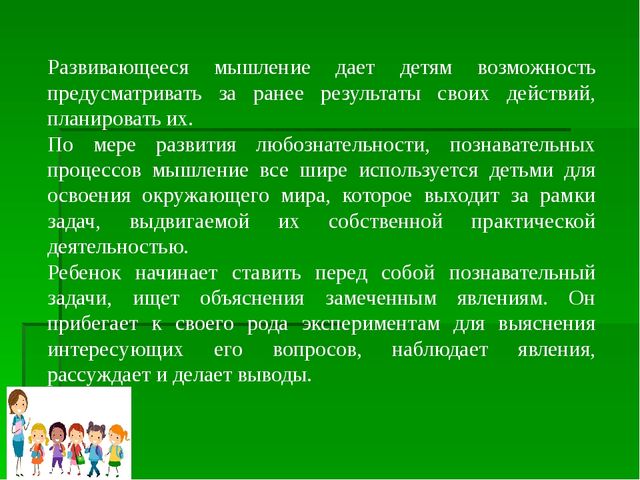
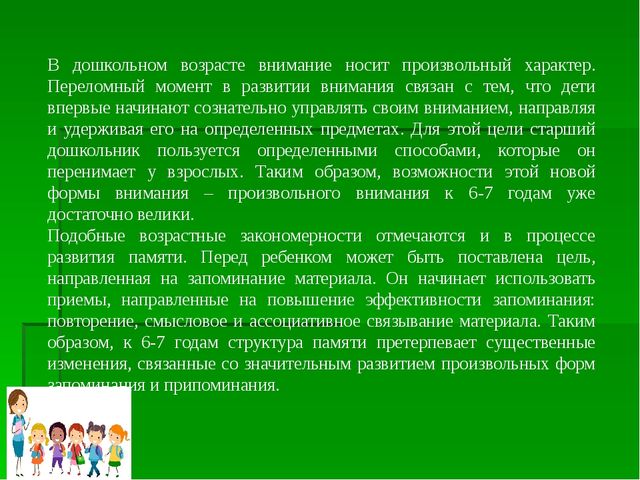
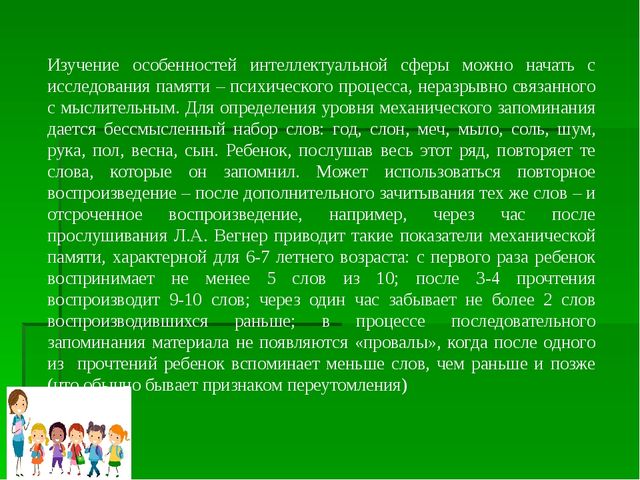
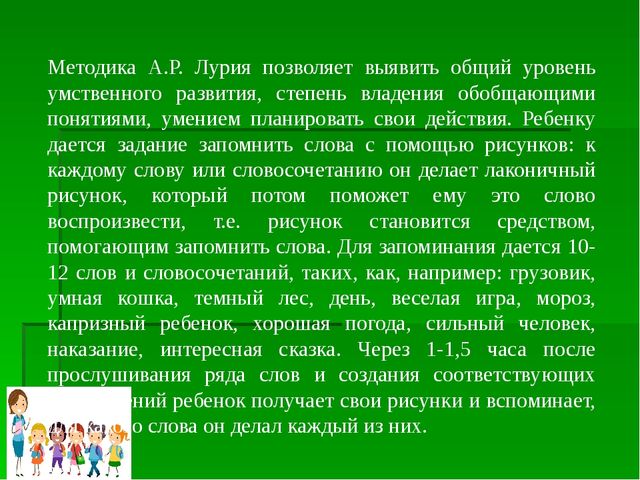
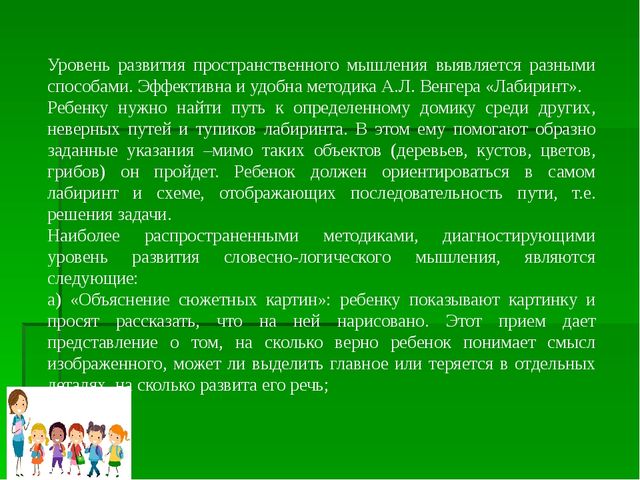
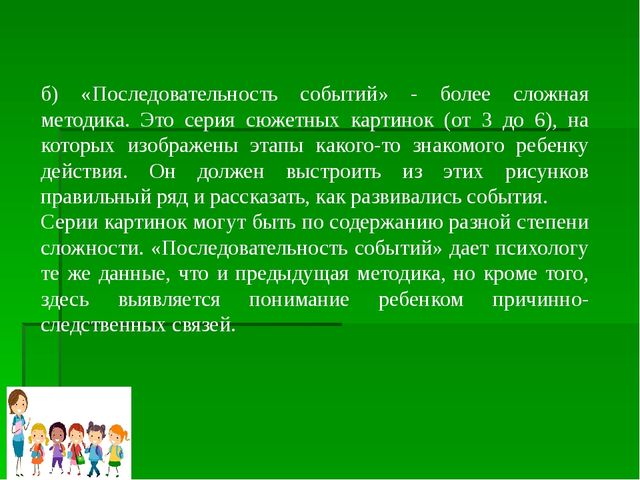
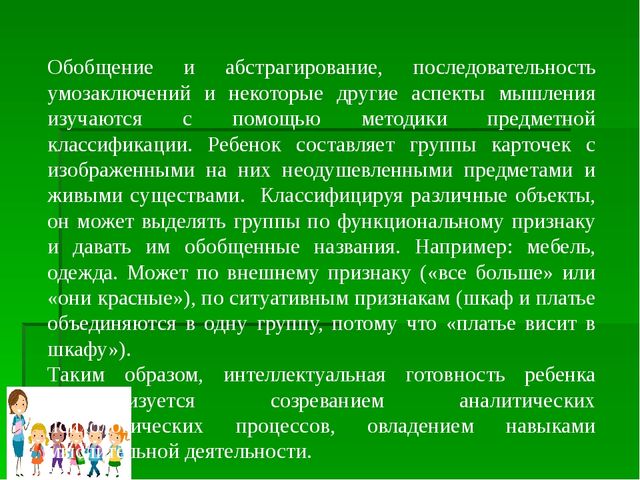
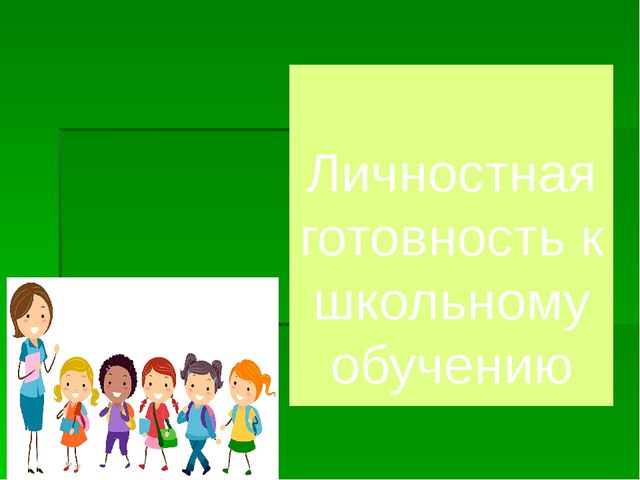
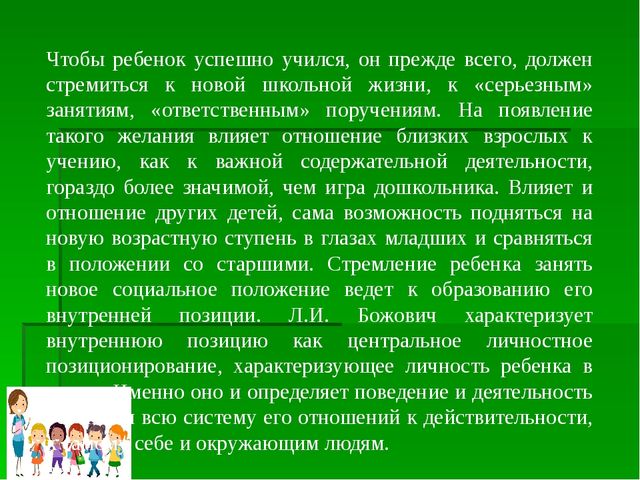
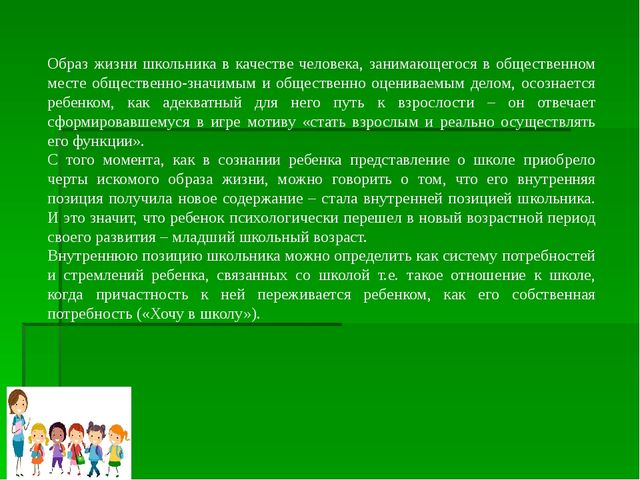
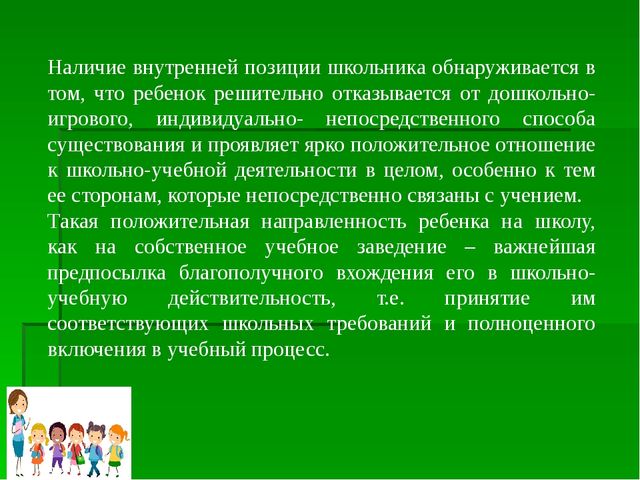
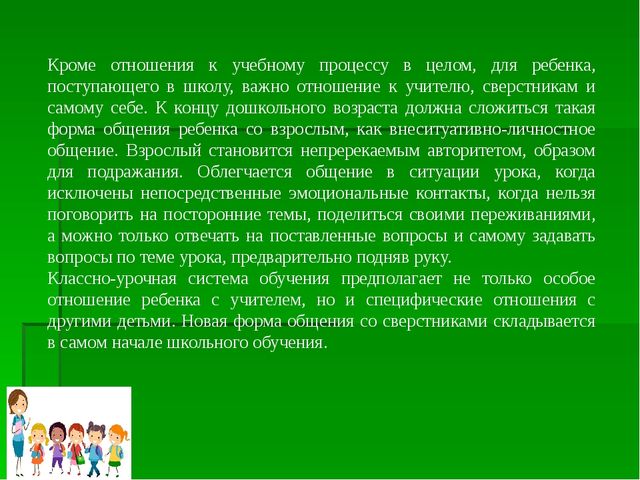
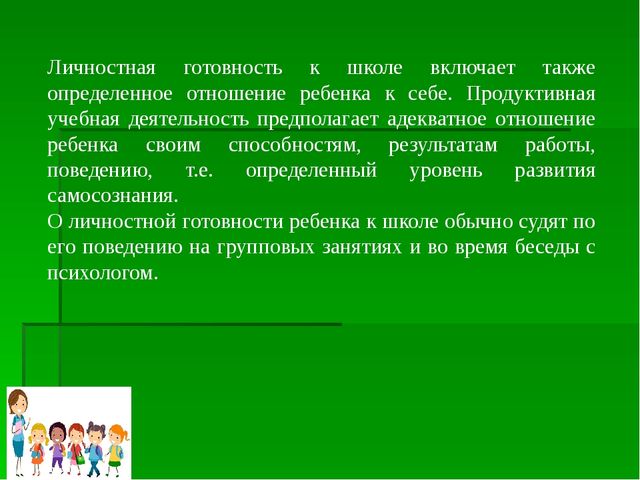
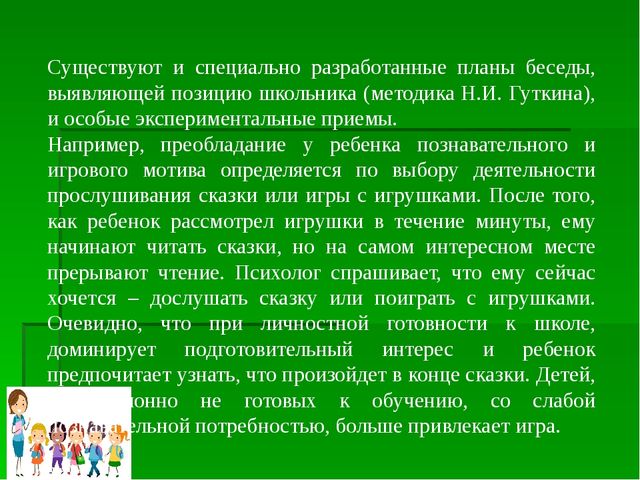
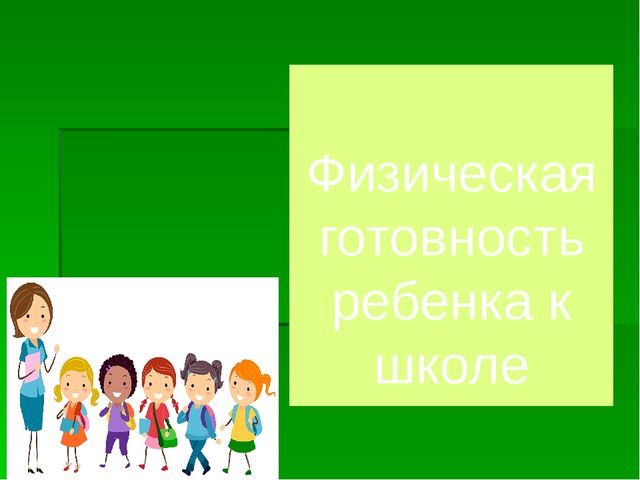
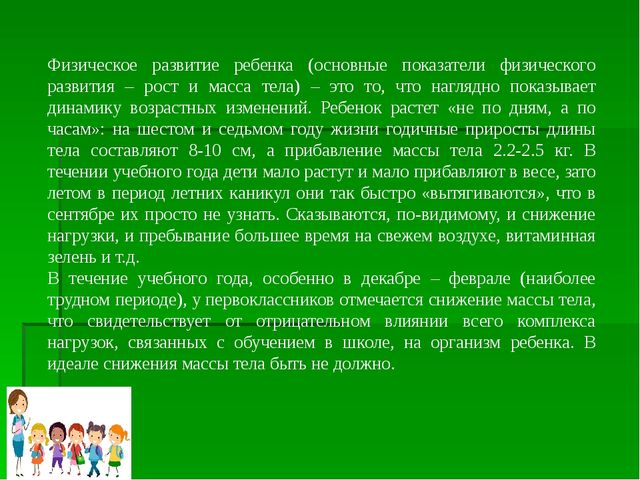
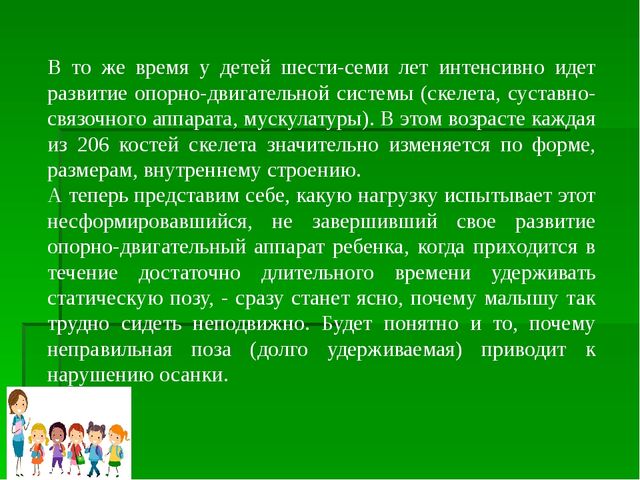
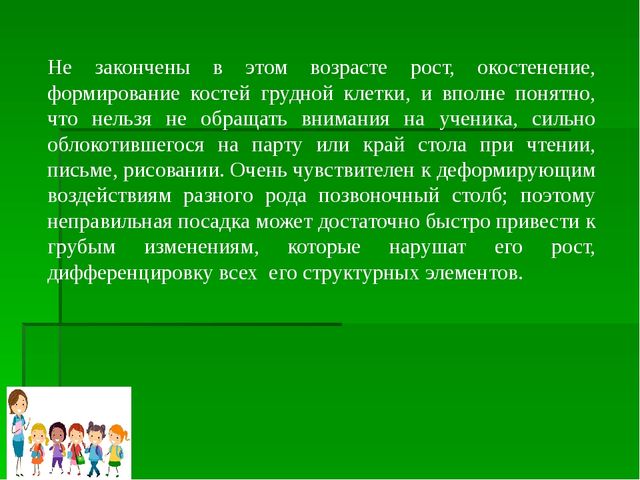
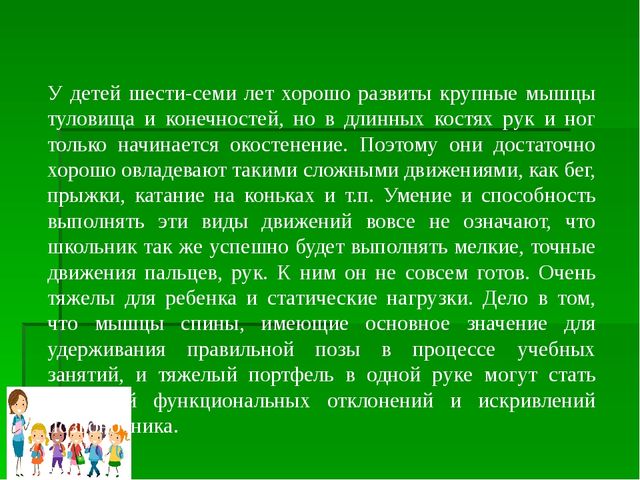
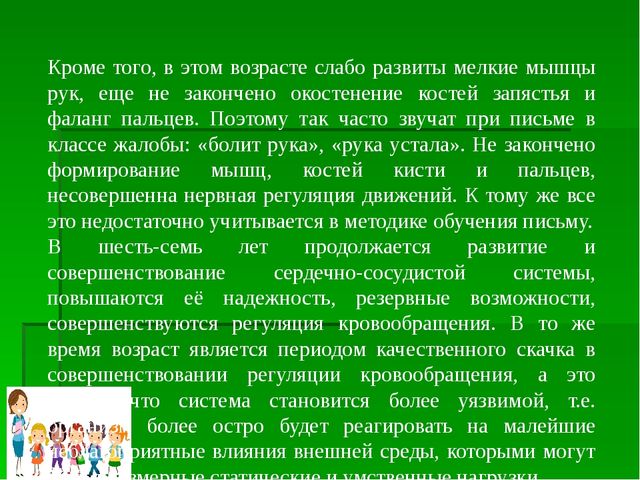
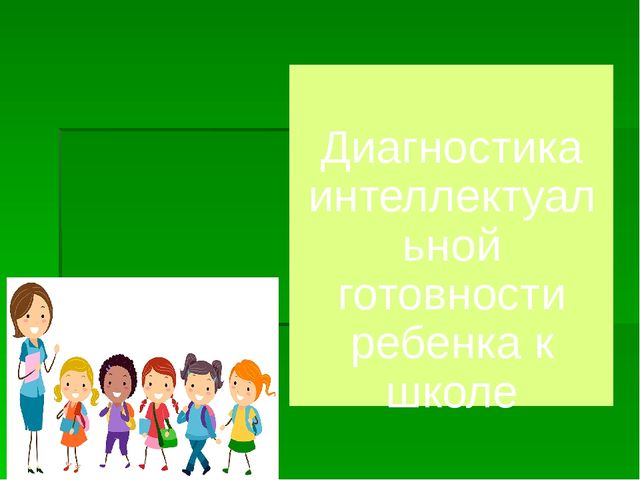
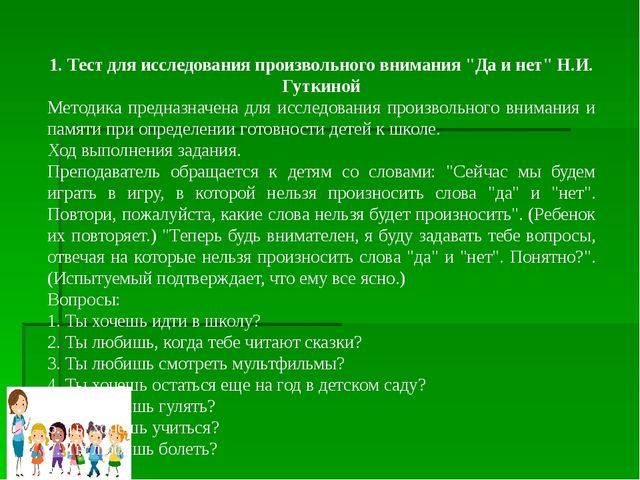
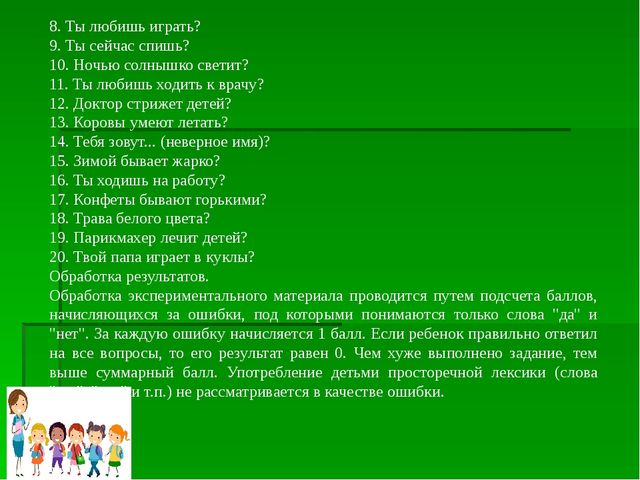
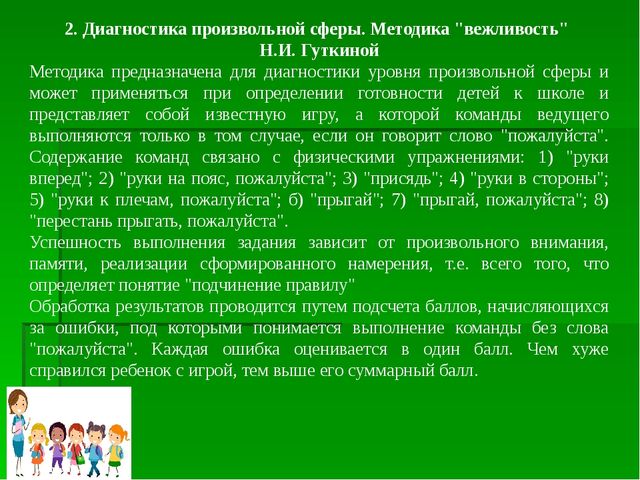
![]()
![]()
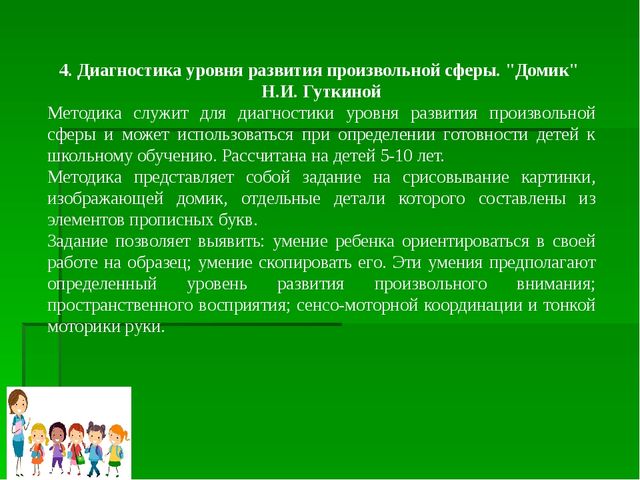
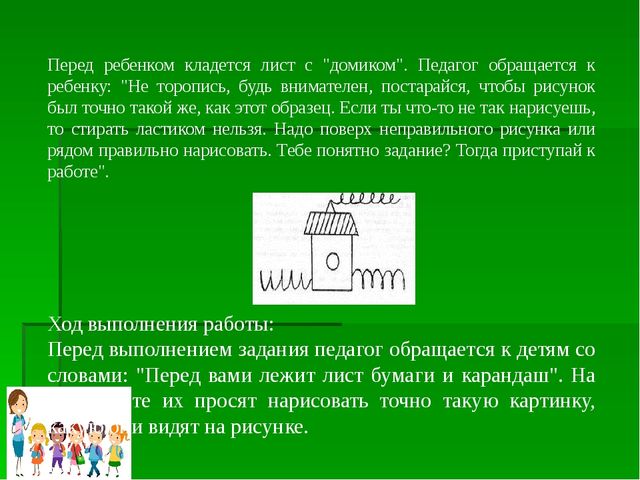
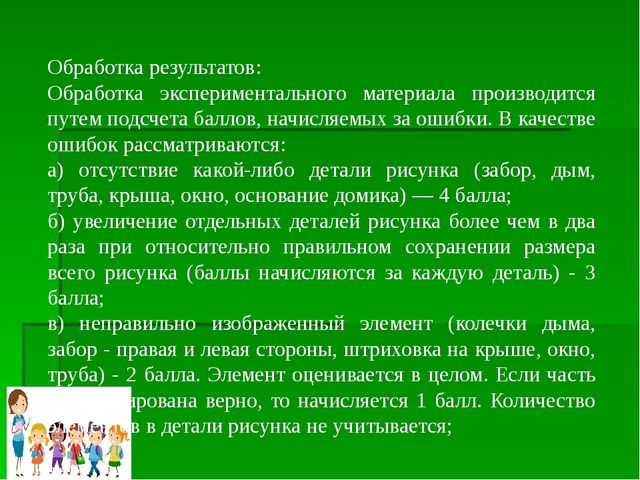
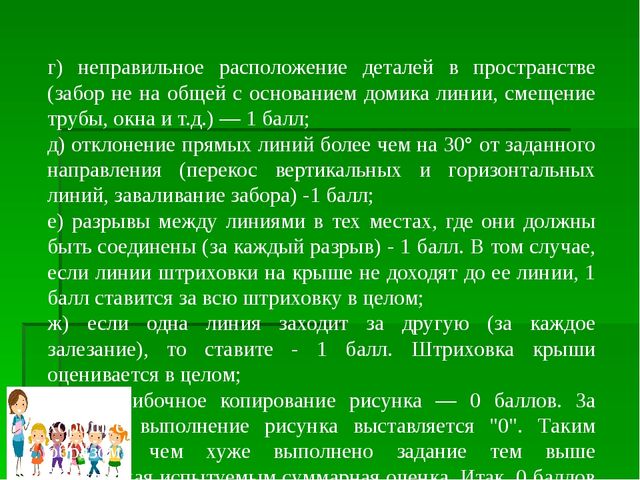
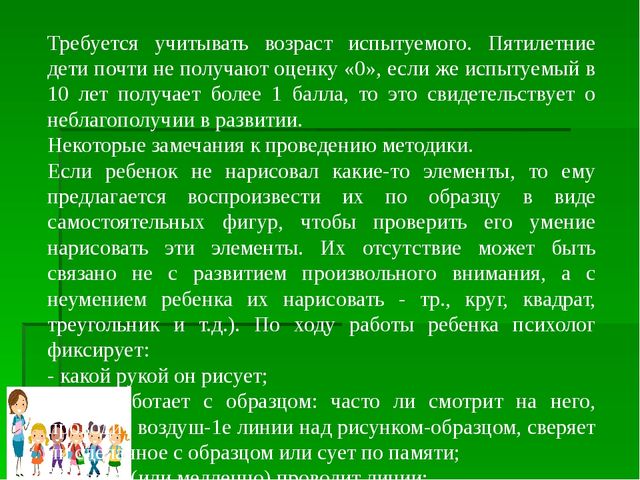
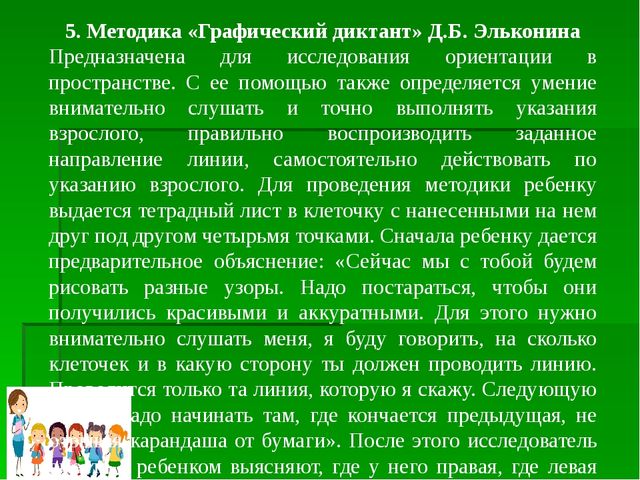
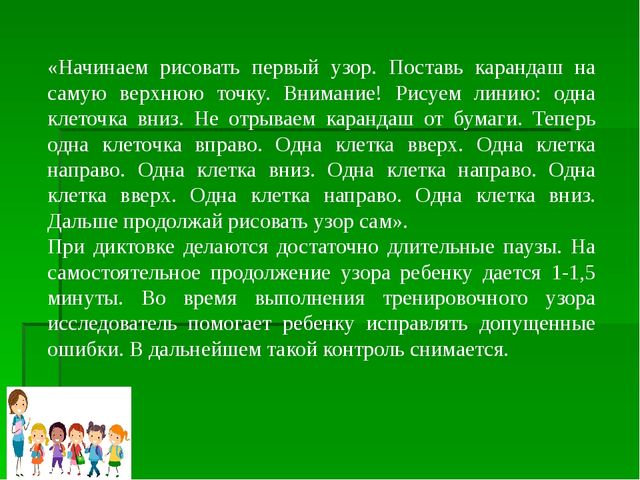
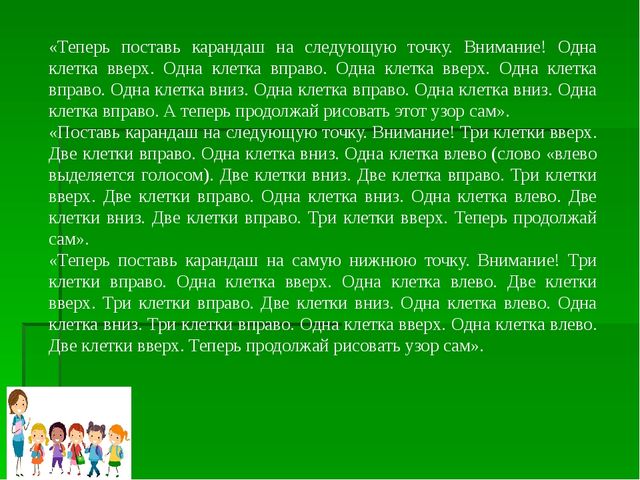
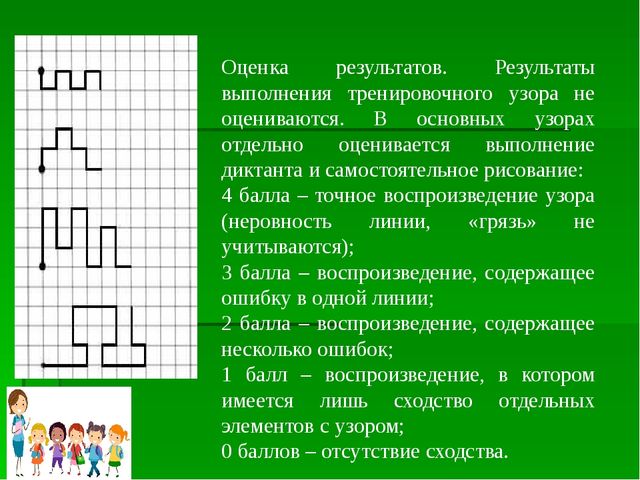
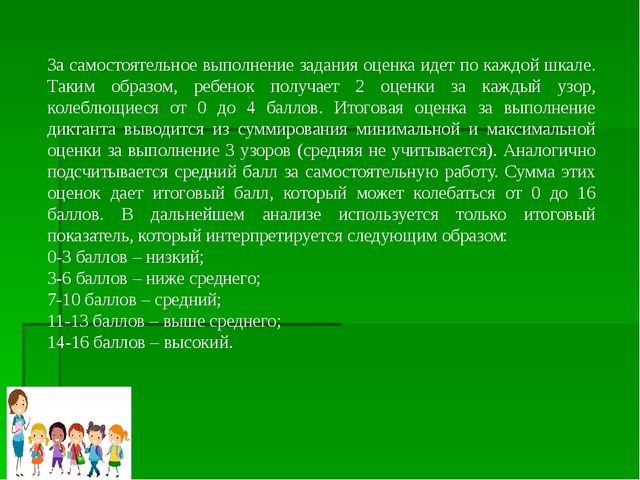
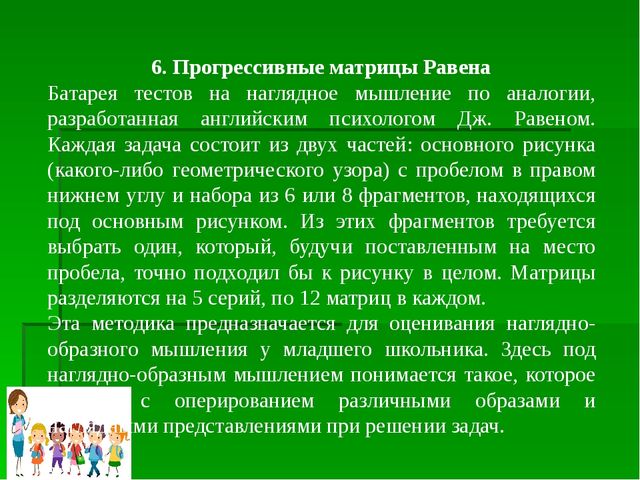
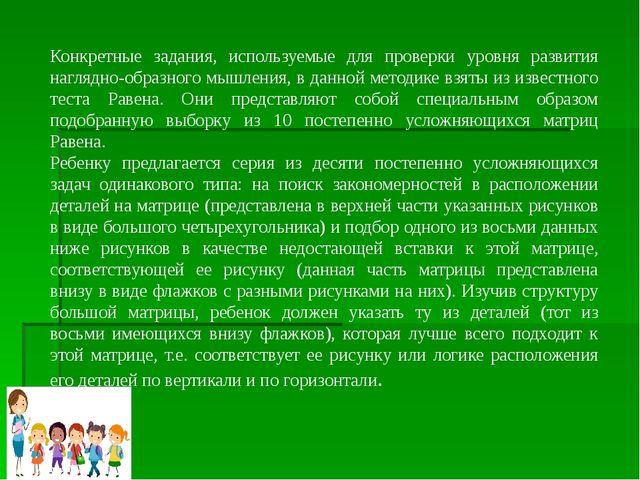
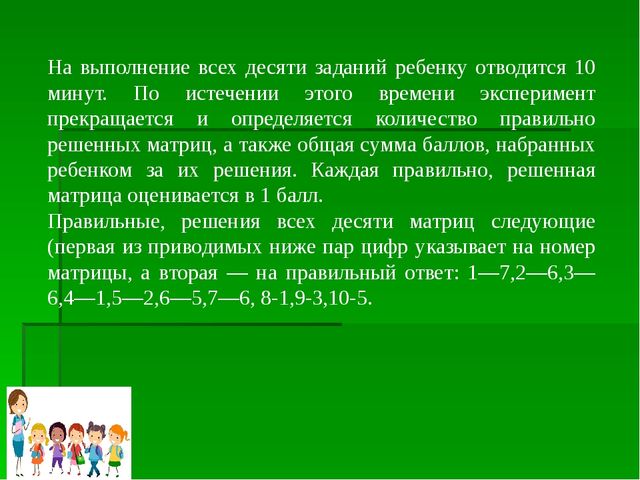
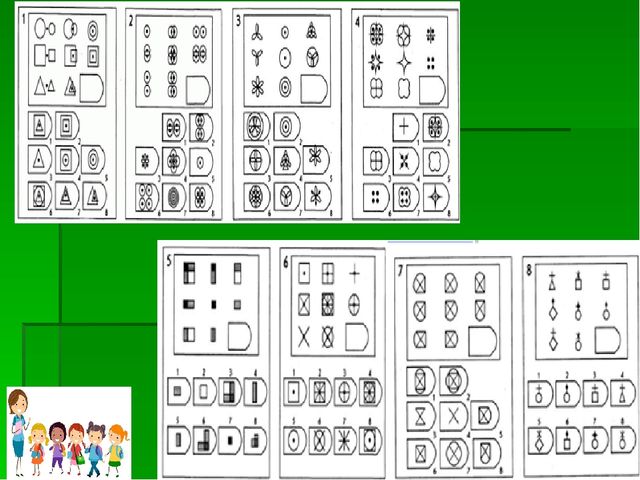
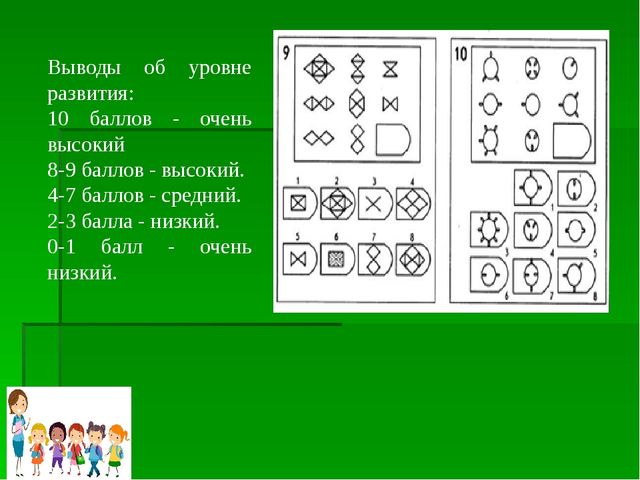
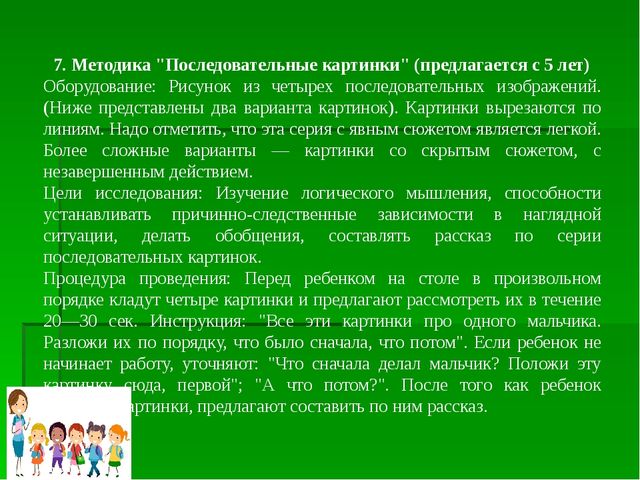
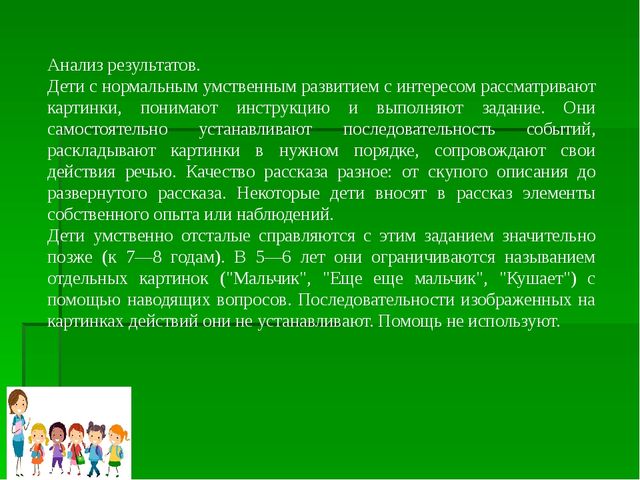
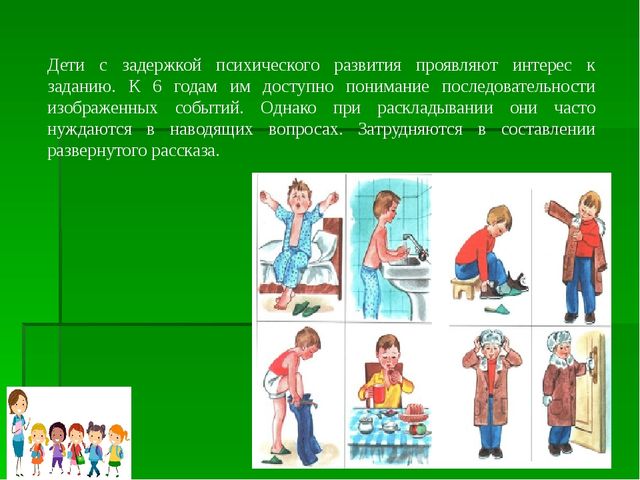
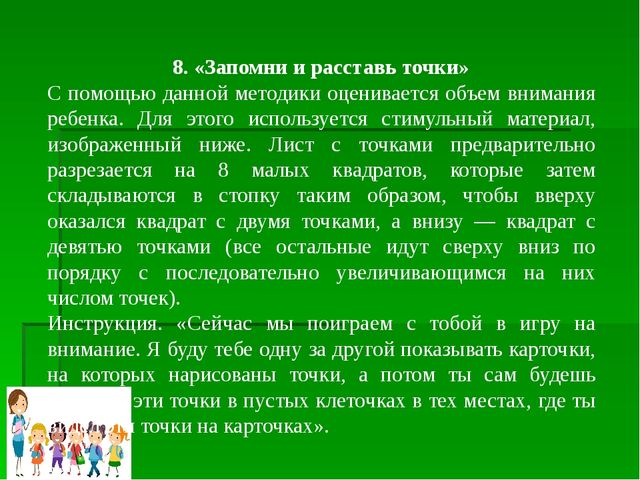
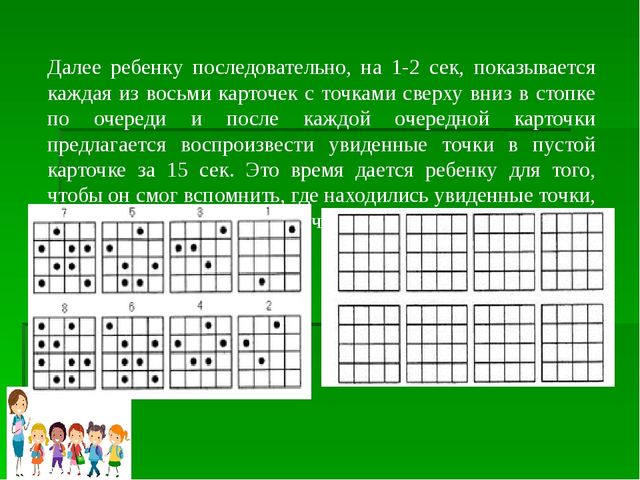
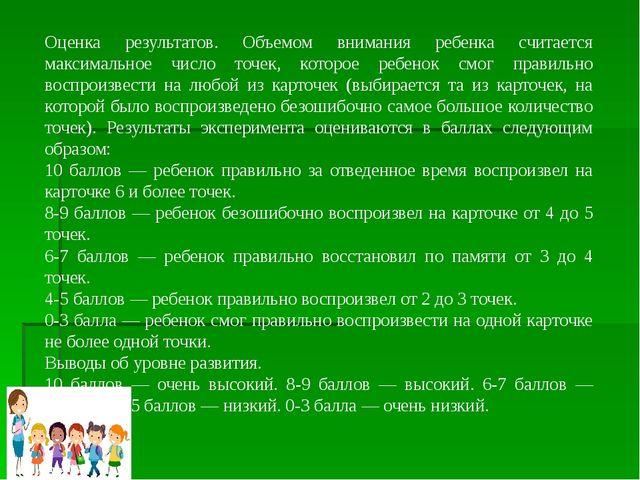
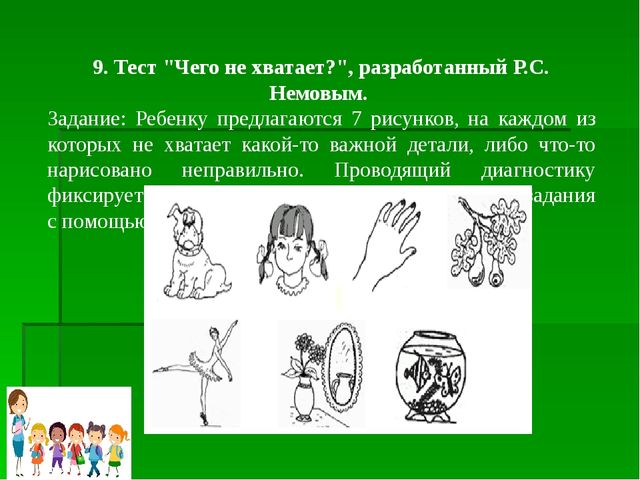
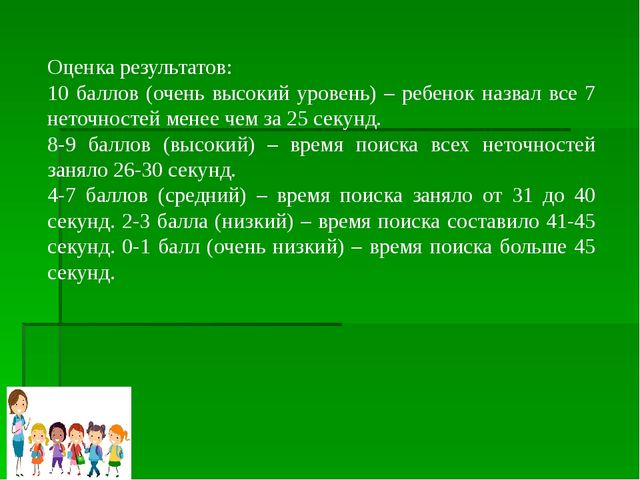
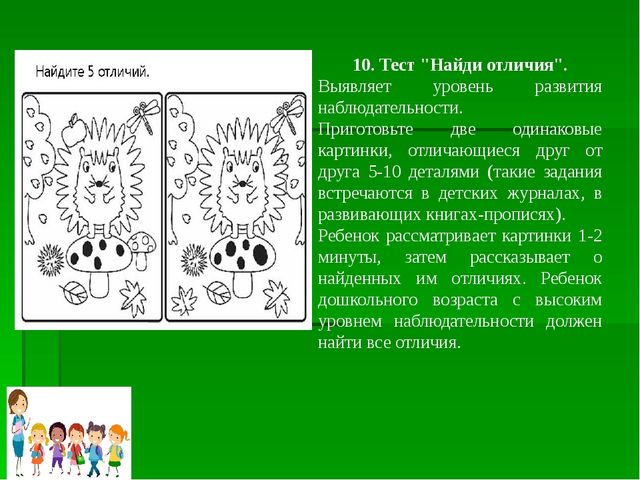
84 1
Description of the presentation by individual slides:
Slide no. 1
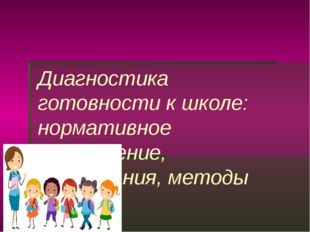
Slide description:
Diagnostics of readiness for school: regulatory support, requirements, methods (FSES)
Slide no. 2
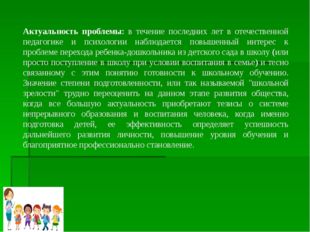
Slide description:
Relevance of the problem: in recent years, in domestic pedagogy and psychology there has been increased interest in the problem of a preschool child’s transition from kindergarten to school (or simply entering school if raised in a family) and the closely related concept of readiness for schooling. The meaning of the degree of preparedness, or the so-called " school maturity“It is difficult to overestimate at this stage of development of society, when theses about the system of continuous education and upbringing of a person are becoming increasingly relevant, when it is the preparation of children and its effectiveness that determines the success of further personal development, increasing the level of training and favorable professional development.
Slide no. 3
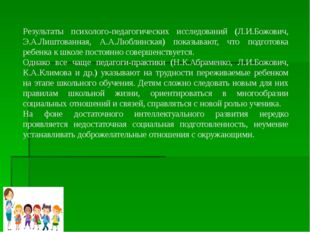
Slide description:
The results of psychological and pedagogical research (L.I. Bozhovich, E.A. Lishtovannaya, A.A. Lyublinskaya) show that the child’s preparation for school is constantly being improved. However, more and more often, practicing teachers (N.K. Abramenko, L.I. Bozhovich, K.A. Klimova, etc.) point to the difficulties experienced by the child at the stage of schooling. It is difficult for children to follow the new rules of school life, navigate the diversity of social relationships and connections, and cope with the new role of a student. Against the background of sufficient intellectual development, insufficient social preparedness and inability to establish friendly relationships with others often manifest themselves.
Slide no. 4
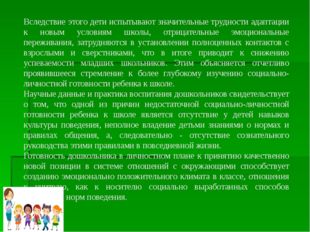
Slide description:
As a result, children experience significant difficulties in adapting to new school conditions, negative emotional experiences, and find it difficult to establish full contacts with adults and peers, which ultimately leads to a decrease in the performance of younger schoolchildren. This explains the clearly manifested desire for a more in-depth study of the child’s social and personal readiness for school. Scientific data and the practice of educating preschool children indicate that one of the reasons for the child’s insufficient social and personal readiness for school is the lack of children’s behavioral skills, children’s incomplete knowledge of the norms and rules of communication, and, consequently, the lack of conscious guidance of these rules in everyday life. The readiness of a preschooler on a personal level to accept a qualitatively new position in the system of relations with others contributes to the creation of an emotionally positive climate in the classroom, an attitude towards the teacher as a bearer of socially developed methods of action and norms of behavior.
Slide no. 5
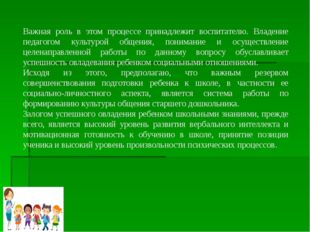
Slide description:
An important role in this process belongs to the teacher. The teacher’s mastery of the culture of communication, understanding and implementation of targeted work on this issue determines the success of the child’s mastery of social relations. Based on this, I assume that an important reserve for improving a child’s preparation for school, in particular its social and personal aspect, is the system of work to create a culture of communication in older preschoolers. The key to a child’s successful mastery of school knowledge is, first of all, a high level of development of verbal intelligence and motivational readiness to study at school, acceptance of the student’s position and a high level of arbitrariness of mental processes.
Slide no. 6
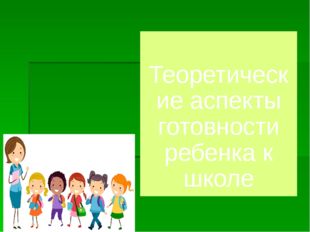
Slide description:
Slide no. 7
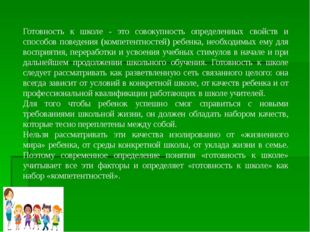
Slide description:
Readiness for school is a set of certain properties and modes of behavior (competencies) of a child necessary for him to perceive, process and assimilate educational stimuli at the beginning and during the further continuation of schooling. Readiness for school should be considered as an extensive network of a connected whole: it always depends on the conditions in a particular school, on the qualities of the child and on the professional qualifications of the teachers working in the school. In order for a child to successfully cope with the new demands of school life, he must have a set of qualities that are closely intertwined. These qualities cannot be considered in isolation from the child’s “life world,” from the environment of a particular school, or from the way of life in the family. Therefore, the modern definition of the concept of “school readiness” takes into account all these factors and defines “school readiness” as a set of “competencies”.
Slide no. 8
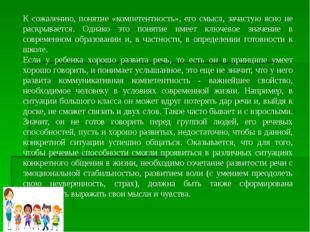
Slide description:
Unfortunately, the concept of “competence” and its meaning are often not clearly explained. However, this concept is of key importance in modern education and, in particular, in determining school readiness. If a child has well-developed speech, that is, he basically knows how to speak well and understands what he hears, this does not mean that he has developed communicative competence - the most important property necessary for a person in modern life. For example, in a large class situation, he may suddenly become speechless and, coming to the board, will not be able to connect even two words. This often happens to adults too. This means that he is not ready to speak in front of a group of people; his speech abilities, although well developed, are not enough to communicate successfully in this specific situation. It turns out that in order for speech abilities to manifest themselves in various situations of specific communication in life, it is necessary to combine the development of speech with emotional stability, the development of will (with the ability to overcome one’s uncertainty, fear), and the need to express one’s thoughts and feelings must also be formed.
Slide no. 9
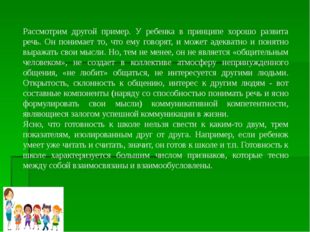
Slide description:
Let's look at another example. The child's speech is generally well developed. He understands what is said to him and can express his thoughts adequately and clearly. But, nevertheless, he is not " sociable person”, does not create an atmosphere of relaxed communication in the team, “does not like” to communicate, and is not interested in other people. Openness, a tendency to communicate, interest in other people - these are the components (along with the ability to understand speech and clearly formulate one’s thoughts) of communicative competence, which are the key to successful communication in life. It is clear that readiness for school cannot be reduced to some two or three indicators isolated from each other. For example, if a child can already read and count, it means he is ready for school, etc. Readiness for school is characterized a large number characteristics that are closely interrelated and interdependent.
Slide no. 10
![]()
Slide description:
School readiness is not a “program” that can simply be taught (trained). Rather, it is an integral property of the child’s personality, which develops under generally favorable conditions in diverse situations. life experience and communication in which the child is included in the family and other social groups. It develops not through special classes, but indirectly - through “participation in life.” Readiness for schooling consists of many components. Psychological readiness for school implies a certain level of formation. In structure psychological readiness As a rule, it is customary to highlight several aspects of readiness.
Slide no. 11
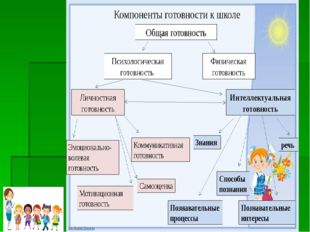
Slide description:
Slide no. 12

Slide description:
Slide no. 13
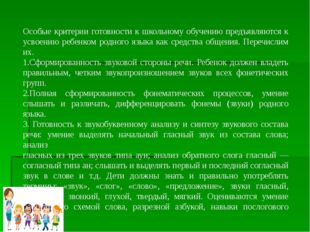
Slide description:
Special criteria for readiness for schooling are applied to the child’s acquisition of his native language as a means of communication. Let's list them. 1. Formation of the sound side of speech. The child must have correct, clear sound pronunciation of sounds of all phonetic groups. 2. Full development of phonemic processes, the ability to hear and distinguish, differentiate phonemes (sounds) of the native language. 3. Readiness for sound-letter analysis and synthesis of the sound composition of speech: the ability to isolate the initial vowel sound from the composition of the word; analysis of vowels from three sounds like aui; analysis of the reverse syllable vowel - consonant type an; hear and highlight the first and last consonant sound in a word, etc. Children must know and correctly use the terms: “sound”, “syllable”, “word”, “sentence”, sounds vowel, consonant, voiced, voiceless, hard, soft. The ability to work with word patterns is assessed, split alphabet, syllable reading skills.
Slide no. 14
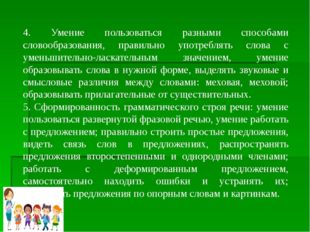
Slide description:
4. Ability to use in different ways word formation, correctly use words with a diminutive meaning, the ability to form words in the required form, highlight sound and semantic differences between words: fur, fur; form adjectives from nouns. 5. Formation of the grammatical structure of speech: the ability to use detailed phrasal speech, the ability to work with sentences; correctly construct simple sentences, see the connection of words in sentences, extend sentences with secondary and homogeneous members; work with a deformed sentence, independently find errors and eliminate them; make sentences based on supporting words and pictures.
Slide no. 15
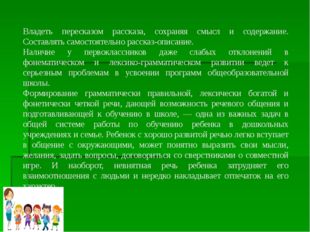
Slide description:
Be able to retell a story while maintaining the meaning and content. Compose your own descriptive story. The presence of even slight deviations in phonemic and lexico-grammatical development among first-graders leads to serious problems in mastering general education school programs. The formation of grammatically correct, lexically rich and phonetically clear speech, which provides the opportunity for verbal communication and prepares for learning at school, is one of the important tasks in the overall system of work on educating a child in preschool institutions and family. A child with well-developed speech easily communicates with others, can clearly express his thoughts and desires, ask questions, and agree with peers about playing together. Conversely, a child’s slurred speech complicates his relationships with people and often leaves an imprint on his character.
Slide no. 16
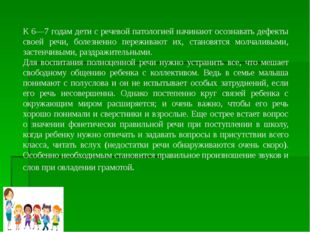
Slide description:
By the age of 6-7 years, children with speech pathology begin to realize their speech defects, experience them painfully, and become silent, shy, and irritable. To develop full-fledged speech, it is necessary to eliminate everything that interferes with the child’s free communication with the team. After all, in the family the baby is understood perfectly and he does not experience any particular difficulties if his speech is imperfect. However, gradually the child’s circle of connections with the outside world expands; and it is very important that his speech is well understood by both peers and adults. The question arises even more acutely about the importance of phonetically correct speech when entering school, when a child needs to answer and ask questions in the presence of the whole class, read aloud (speech deficiencies are revealed very quickly). It becomes especially necessary correct pronunciation sounds and words when mastering literacy.
Slide no. 17
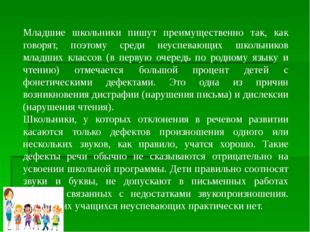
Slide description:
Junior schoolchildren they write predominantly as they speak, which is why among low-achieving schoolchildren junior classes(primarily by native language and reading) there is a large percentage of children with phonetic defects. This is one of the causes of dysgraphia (writing impairment) and dyslexia (reading impairment). Schoolchildren who have disabilities speech development concern only defects in the pronunciation of one or several sounds; as a rule, they learn well. Such speech defects usually do not negatively affect the learning of the school curriculum. Children correctly correlate sounds and letters and do not make mistakes in written work due to deficiencies in sound pronunciation. Among these students there are practically no underachievers.
Slide no. 18
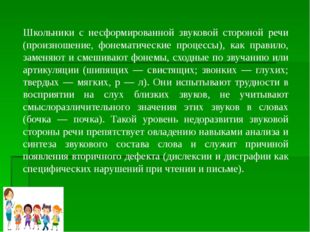
Slide description:
Schoolchildren with an unformed sound side of speech (pronunciation, phonemic processes), as a rule, replace and mix phonemes that are similar in sound or articulation (hissing - whistling; voiced - deaf; hard - soft, r - l). They experience difficulties in perceiving close sounds by ear and do not take into account the distinctive meaning of these sounds in words (barrel - kidney). This level of underdevelopment of the sound side of speech prevents mastering the skills of analysis and synthesis of the sound composition of a word and causes the appearance of a secondary defect (dyslexia and dysgraphia as specific disorders in reading and writing).
Slide no. 19
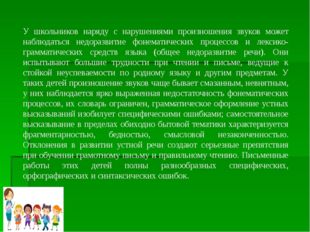
Slide description:
In schoolchildren, along with disturbances in the pronunciation of sounds, underdevelopment of phonemic processes and lexico-grammatical means of the language (general underdevelopment of speech) may be observed. They experience great difficulties in reading and writing, leading to persistent failure in their native language and other subjects. In such children, the pronunciation of sounds is often blurred and indistinct, they have a pronounced deficiency of phonemic processes, their vocabulary is limited, and the grammatical design of oral statements is replete with specific errors; independent utterance within the framework of everyday topics is characterized by fragmentation, poverty, and semantic incompleteness. Deviations in the development of oral speech create serious obstacles in learning to write correctly and read correctly. The written work of these children is full of a variety of specific, spelling and syntactic errors.
Slide no. 20
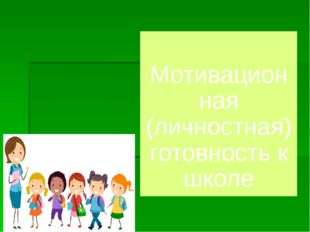
Slide description:
Slide no. 21
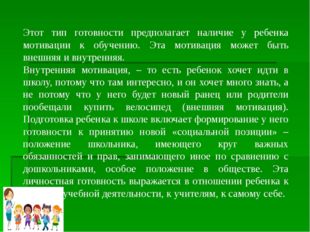
Slide description:
This type of readiness assumes that the child is motivated to learn. This motivation can be external and internal. Internal motivation - that is, the child wants to go to school because it is interesting and he wants to know a lot, and not because he will have a new backpack or his parents promised to buy a bicycle (external motivation). Preparing a child for school includes the formation of his readiness to accept a new “social position” - the position of a schoolchild who has a range of important responsibilities and rights, and occupies a special position in society that is different from preschoolers. This personal readiness is expressed in the child’s attitude towards school, towards educational activities, towards teachers, towards himself.
Slide no. 22
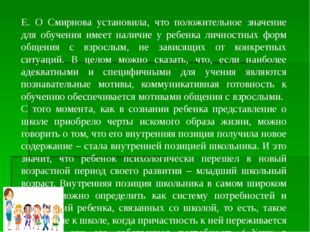
Slide description:
E. O Smirnova found that a child’s personal forms of communication with an adult, independent of specific situations, have a positive impact on learning. In general, we can say that if cognitive motives are the most adequate and specific for learning, communicative readiness for learning is ensured by motives for communicating with adults. From the moment in the child’s mind the idea of school acquired the features of the desired way of life, we can say that his internal position received new content - it became the internal position of a schoolchild. And this means that the child has psychologically moved to a new age period of their development - junior school age. The internal position of a schoolchild in the broadest sense can be defined as a system of needs and aspirations of the child associated with school, that is, such an attitude towards school when involvement in it is experienced by the child as his own need (“I want to go to school!”).
Slide no. 23
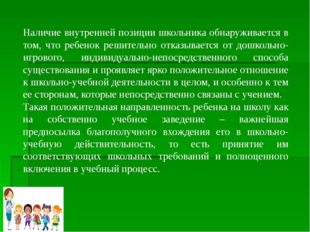
Slide description:
The presence of an internal position of a schoolchild is revealed in the fact that the child resolutely rejects the preschool playful, individually direct way of existence and shows a clearly positive attitude towards school and educational activities in general, and especially to those aspects of it that are directly related to learning. Such a positive focus of the child on school as an actual educational institution- the most important prerequisite for his successful entry into school and educational reality, that is, his acceptance of the relevant school requirements and full inclusion in the educational process.
Slide no. 24
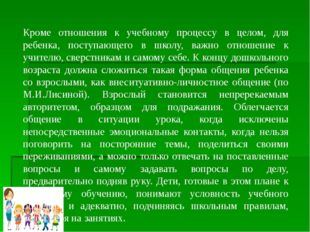
Slide description:
Slide no. 25
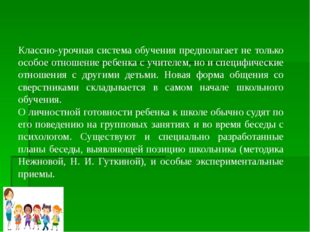
Slide description:
The classroom-lesson education system presupposes not only a special relationship between the child and the teacher, but also specific relationships with other children. A new form of communication with peers develops at the very beginning of schooling. A child’s personal readiness for school is usually judged by his behavior in group classes and during a conversation with a psychologist. There are also specially developed conversation plans that reveal the student’s position (methodology of Nezhnova, N.I. Gutkina), and special experimental techniques.
Slide no. 26
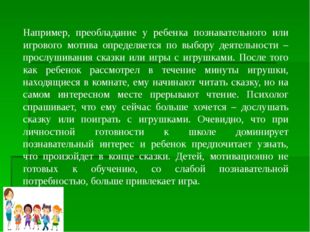
Slide description:
For example, the predominance of a cognitive or play motive in a child is determined by the choice of activity - listening to a fairy tale or playing with toys. After the child has looked at the toys in the room for a minute, they begin to read a fairy tale to him, but at the most interesting point the reading is interrupted. The psychologist asks what he wants more now - to listen to the rest of the story or to play with toys. Obviously, with personal readiness for school, cognitive interest dominates and the child prefers to find out what will happen at the end of the fairy tale. Children who are not motivationally ready for learning, with weak cognitive needs, are more attracted to games.
Slide no. 27

Slide description:
Slide no. 28
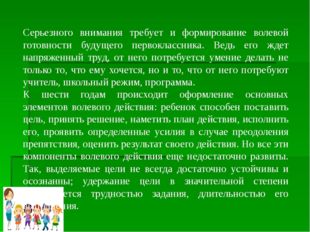
Slide description:
The formation of the volitional readiness of the future first-grader also requires serious attention. After all, hard work awaits him; he will be required to be able to do not only what he wants, but also what the teacher, the school regime, and the program require of him. By the age of six, the basic elements of volitional action are formed: the child is able to set a goal, make a decision, outline a plan of action, carry it out, show some effort in overcoming an obstacle, and evaluate the result of his action. But all these components of volitional action are not yet sufficiently developed. Thus, the identified goals are not always sufficiently stable and conscious; goal retention is largely determined by the difficulty of the task and the duration of its completion.
Slide no. 29
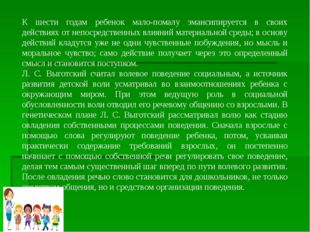
Slide description:
By the age of six, the child is little by little emancipated in his actions from the direct influences of the material environment; actions are no longer based on sensual impulses alone, but on thought and moral feeling; The action itself receives a certain meaning through this and becomes an action. L. S. Vygotsky considered volitional behavior to be social, and saw the source of the development of a child’s will in the child’s relationship with the outside world. At the same time, the leading role in the social conditioning of the will was assigned to verbal communication with adults. In genetic terms, L. S. Vygotsky considered will as a stage of mastering one’s own behavioral processes. First, adults regulate the child’s behavior with the help of words, then, having practically assimilated the content of the adults’ demands, he gradually begins to regulate his behavior with the help of his own speech, thereby making a significant step forward along the path of volitional development. After mastering speech, the word becomes for preschoolers not only a means of communication, but also a means of organizing behavior.
Slide no. 30
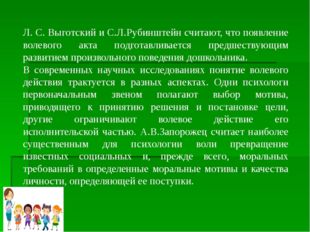
Slide description:
L. S. Vygotsky and S. L. Rubinstein believe that the appearance of a volitional act is prepared by the previous development of the voluntary behavior of a preschooler. In modern scientific research, the concept of volitional action is interpreted in different aspects. Some psychologists believe that the initial link is the choice of motive, leading to decision-making and goal setting, while others limit volitional action to its executive part. A.V. Zaporozhets considers the most essential for the psychology of will to be the transformation of certain social and, above all, moral requirements into certain moral motives and qualities of the individual that determines her actions.
Slide no. 31
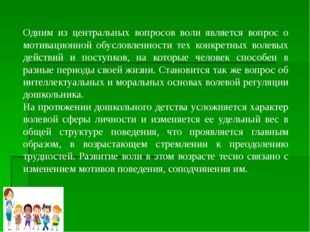
Slide description:
One of the central issues of will is the question of the motivational conditionality of those specific volitional actions and deeds that a person is capable of at different periods of his life. The question also arises about the intellectual and moral foundations of the volitional regulation of a preschooler. During preschool childhood, the nature of the volitional sphere of the individual becomes more complex and its share in the general structure of behavior changes, which is manifested mainly in an increasing desire to overcome difficulties. The development of will at this age is closely related to changes in motives of behavior and subordination to them.
Slide no. 32
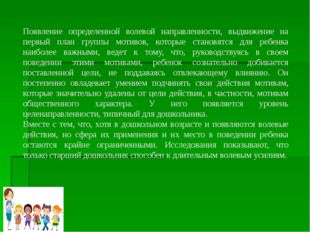
Slide description:
The emergence of a certain volitional orientation, the highlighting of a group of motives that become the most important for the child, leads to the fact that, guided in his behavior by these motives, the child consciously achieves his goal, without succumbing to distracting influences. He gradually masters the ability to subordinate his actions to motives that are significantly removed from the goal of the action, in particular, motives of a social nature. He develops a level of focus typical of a preschooler. At the same time, although in preschool age and volitional actions appear, but the scope of their application and their place in the child’s behavior remain extremely limited. Research shows that only older preschoolers are capable of prolonged volitional efforts.
Slide no. 33
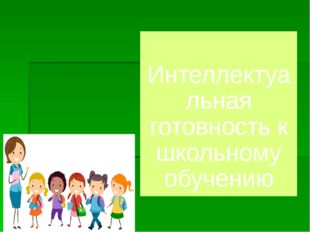
Slide description:
Slide no. 34
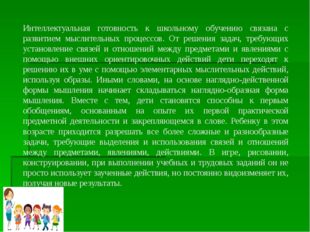
Slide description:
Intellectual readiness for school learning is associated with the development of thought processes. From solving problems that require the establishment of connections and relationships between objects and phenomena with the help of external indicative actions, children move on to solving them in their minds with the help of elementary mental actions using images. In other words, on the basis of a visually effective form of thinking, a visually figurative form of thinking begins to take shape. At the same time, children become capable of the first generalizations, based on the experience of their first practical objective activity and fixed in words. A child at this age has to solve increasingly complex and varied problems that require the identification and use of connections and relationships between objects, phenomena, and actions. In playing, drawing, constructing, and when performing educational and work tasks, he not only uses memorized actions, but constantly modifies them, obtaining new results.
Slide no. 35
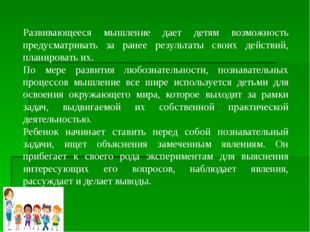
Slide description:
Developing thinking gives children the opportunity to foresee the results of their actions in advance and plan them. As curiosity and cognitive processes develop, thinking is increasingly used by children to master the world around them, which goes beyond the scope of the tasks put forward by their own practical activities. The child begins to set cognitive goals for himself and seeks explanations for observed phenomena. He resorts to a kind of experiment to clarify questions that interest him, observes phenomena, reasons and draws conclusions.
Slide no. 36
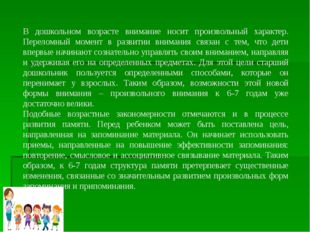
Slide description:
At preschool age, attention is voluntary. The turning point in the development of attention is associated with the fact that children for the first time begin to consciously manage their attention, directing and maintaining it on certain objects. For this purpose, the older preschooler uses certain methods that he adopts from adults. Thus, the possibilities of this new form of attention - voluntary attention by 6-7 years old are already quite large. Similar age-related patterns are observed in the process of memory development. The child may be given a goal aimed at memorizing the material. He begins to use techniques aimed at increasing the efficiency of memorization: repetition, semantic and associative linking of material. Thus, by the age of 6-7 years, the structure of memory undergoes significant changes associated with the significant development of voluntary forms of memorization and recall.
Slide no. 37
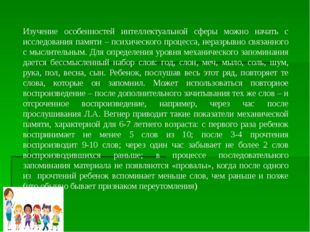
Slide description:
The study of the characteristics of the intellectual sphere can begin with the study of memory - a mental process inextricably linked with the mental one. To determine the level of mechanical memorization, a meaningless set of words is given: year, elephant, sword, soap, salt, noise, hand, floor, spring, son. The child, having listened to this entire series, repeats the words that he remembers. Repeated playback can be used - after additional reading of the same words - and delayed playback, for example, an hour after listening to L.A. Wegner gives such indicators of mechanical memory, characteristic of 6-7 summer age: the first time the child perceives at least 5 words out of 10; after 3-4 readings, reproduces 9-10 words; after one hour, forgets no more than 2 words reproduced earlier; in the process of sequential memorization of material, “gaps” do not appear when, after one of the readings, the child remembers less words than earlier and later (which is usually a sign of overwork)
Slide no. 38
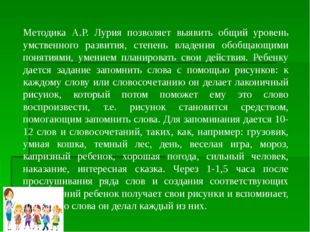
Slide description:
Methodology A.R. Luria allows us to identify the general level mental development, the degree of mastery of general concepts, the ability to plan one’s actions. The child is given the task of remembering words with the help of drawings: for each word or phrase, he makes a laconic drawing, which will then help him reproduce this word, i.e. drawing becomes a means of helping to remember words. For memorization, 10-12 words and phrases are given, such as, for example: truck, smart cat, dark forest, day, fun game, freezing, capricious child, good weather, strong man, punishment, interesting tale. 1-1.5 hours after listening to a series of words and creating corresponding images, the child receives his drawings and remembers which word he made each of them for.
Slide no. 39
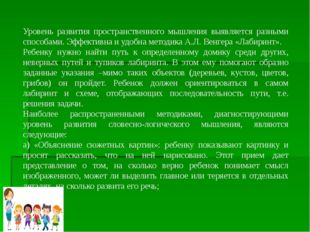
Slide description:
The level of development of spatial thinking is revealed in different ways. A.L.’s method is effective and convenient. Wenger "Labyrinth". The child needs to find the way to a certain house among other, wrong paths and dead ends of the maze. In this he is helped by figuratively given instructions - he will pass by such objects (trees, bushes, flowers, mushrooms). The child must navigate the labyrinth itself and the diagram showing the sequence of the path, i.e. solving the problem. The most common methods that diagnose the level of development of verbal-logical thinking are the following: a) “Explanation of plot pictures”: the child is shown a picture and asked to tell what is drawn on it. This technique gives an idea of how accurately the child understands the meaning of what is depicted, whether he can highlight the main thing or is lost in individual details, how well his speech is developed;
Slide no. 40
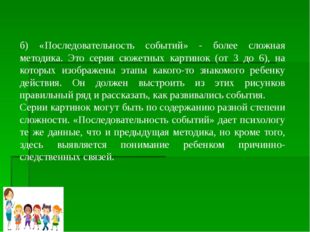
Slide description:
b) “Sequence of events” is a more complex technique. This is a series of plot pictures (from 3 to 6), which depict the stages of some action familiar to the child. He must build the correct series of these drawings and tell how the events developed. Series of pictures can have varying degrees of complexity in content. “Sequence of events” gives the psychologist the same data as the previous technique, but in addition, it reveals the child’s understanding of cause-and-effect relationships.
Slide no. 41
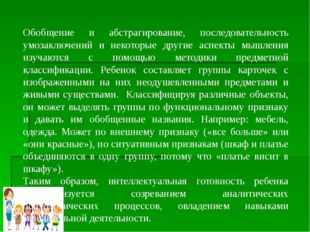
Slide description:
Generalization and abstraction, sequence of inferences and some other aspects of thinking are studied using the method of subject classification. The child makes groups of cards with inanimate objects and living beings depicted on them. By classifying various objects, he can distinguish groups according to functional characteristics and give them general names. For example: furniture, clothes. Maybe by external signs (“everything is bigger” or “they are red”), by situational signs (the closet and the dress are combined into one group because “the dress is hanging in the closet”). Thus, intellectual readiness The child is characterized by the maturation of analytical psychological processes and mastery of mental activity skills.
Slide no. 42
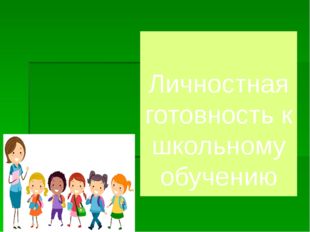
Slide description:
Slide no. 43
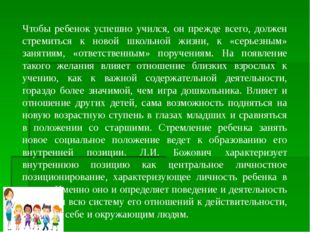
Slide description:
In order for a child to study successfully, he must first of all strive for a new school life, for “serious” studies, “responsible” assignments. The emergence of such a desire is influenced by the attitude of close adults to learning as an important meaningful activity, much more significant than the play of a preschooler. The attitude of other children, the very opportunity to rise to a new age level in the eyes of the younger ones and become equal in position with the older ones, also influences. The child's desire to occupy himself with new things social status leads to the formation of his internal position. L.I. Bozovic characterizes the internal position as a central personal positioning that characterizes the child’s personality as a whole. It is this that determines the child’s behavior and activity and the entire system of his relationships to reality, to himself and the people around him.
Slide no. 44
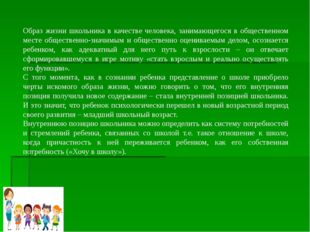
Slide description:
The lifestyle of a schoolchild as a person engaged in public place a socially significant and socially valued matter, is recognized by the child as an adequate path to adulthood for him - it meets the motive formed in the game “to become an adult and actually carry out his functions.” From the moment in the child’s mind the idea of school acquired the features of the desired way of life, we can say that his internal position received new content - it became the internal position of a schoolchild. And this means that the child has psychologically moved into a new age period of his development - primary school age. The internal position of a schoolchild can be defined as a system of needs and aspirations of the child associated with school, i.e. such an attitude towards school when involvement in it is experienced by the child as his own need (“I want to go to school”).
Slide no. 45
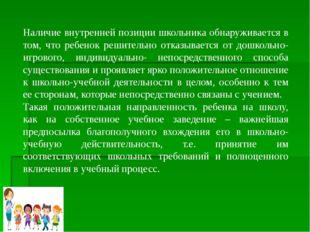
Slide description:
The presence of an internal position of a schoolchild is revealed in the fact that the child resolutely rejects the preschool playful, individually direct way of existence and shows a clearly positive attitude towards school and educational activities in general, especially to those aspects of it that are directly related to learning. Such a positive orientation of the child towards school, as towards his own educational institution, is the most important prerequisite for his successful entry into school and educational reality, i.e. acceptance of relevant school requirements and full inclusion in the educational process.
Slide no. 46
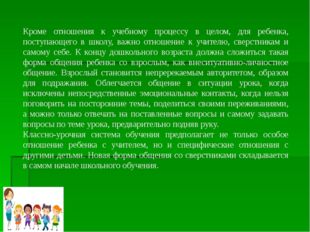
Slide description:
Slide no. 47
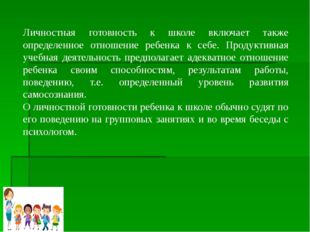
Slide description:
Personal readiness for school also includes a certain attitude of the child towards himself. Productive educational activities presupposes an adequate attitude of the child to his abilities, work results, behavior, i.e. a certain level of development of self-awareness. A child’s personal readiness for school is usually judged by his behavior in group classes and during a conversation with a psychologist.
Slide no. 48
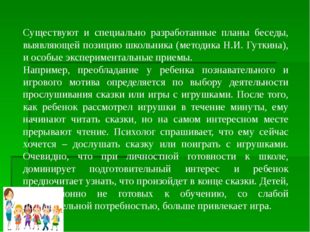
Slide description:
There are also specially developed conversation plans that reveal the student’s position (N.I. Gutkin’s method), and special experimental techniques. For example, the predominance of a cognitive and playful motive in a child is determined by the choice of the activity of listening to a fairy tale or playing with toys. After the child has looked at the toys for a minute, they begin to read fairy tales to him, but at the most interesting point the reading is interrupted. The psychologist asks what he wants to do now: listen to the rest of the story or play with toys. Obviously, with personal readiness for school, preparatory interest dominates and the child prefers to find out what will happen at the end of the fairy tale. Children who are not motivationally ready for learning, with weak cognitive needs, are more attracted to games.
Slide no. 49
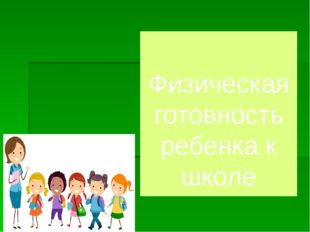
Slide description:
Slide no. 50
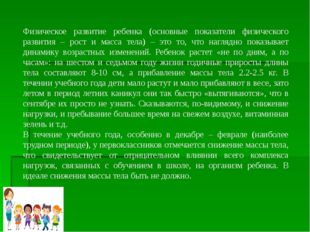
Slide description:
Physical development of the child (main indicators physical development– height and body weight) – this is what clearly shows the dynamics age-related changes. The child grows “by leaps and bounds”: in the sixth and seventh year of life, the annual increase in body length is 8-10 cm, and the increase in body weight is 2.2-2.5 kg. During the school year, children grow little and gain little weight, but in the summer during the summer holidays they “stretch out” so quickly that in September they are simply unrecognizable. Apparently, both the reduction in load and staying longer time in the fresh air, vitamin greens, etc. During the school year, especially in December - February (the most difficult period), first-graders experience a decrease in body weight, which indicates the negative impact of the entire complex of stresses associated with schooling on the child’s body. Ideally, there should be no weight loss.
Slide no. 51
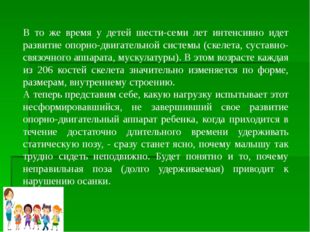
Slide description:
At the same time, in children six to seven years old, the musculoskeletal system (skeleton, joint-ligamentous apparatus, muscles) is intensively developing. At this age, each of the 206 bones of the skeleton changes significantly in shape, size, and internal structure. Now let’s imagine what kind of load this unformed musculoskeletal system of a child, which has not completed its development, experiences when he has to hold a static pose for quite a long time - it will immediately become clear why it is so difficult for a baby to sit still. It will also be clear why an incorrect posture (held for a long time) leads to poor posture.
Slide no. 52
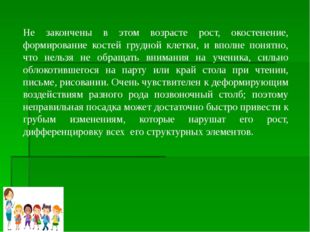
Slide description:
At this age, growth, ossification, and formation of the bones of the chest are not complete, and it is quite understandable that one cannot ignore a student leaning heavily on a desk or the edge of a table while reading, writing, or drawing. The spinal column is very sensitive to deforming influences of various kinds; therefore, incorrect planting can quickly lead to gross changes that will disrupt its growth and differentiation of all its structural elements.
Slide no. 53
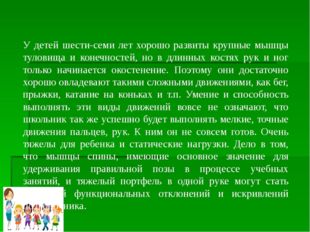
Slide description:
In children six to seven years old, the large muscles of the trunk and limbs are well developed, but ossification is just beginning in the long bones of the arms and legs. Therefore, they master complex movements such as running, jumping, skating, etc. quite well. The ability and ability to perform these types of movements does not at all mean that the student will also successfully perform small, precise movements of the fingers and hands. He is not quite ready for them. Static loads are also very heavy for a child. The fact is that the back muscles, which are of primary importance for maintaining the correct posture during training sessions, and a heavy briefcase in one hand can cause functional deviations and curvatures of the spine.
Slide no. 54
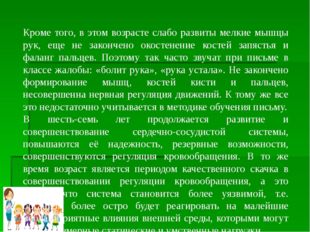
Slide description:
In addition, at this age, the small muscles of the hands are poorly developed, and the ossification of the bones of the wrist and phalanges of the fingers is not yet complete. That’s why complaints are so often heard when writing in class: “my hand hurts,” “my hand is tired.” The formation of muscles, bones of the hand and fingers is not complete, the nervous regulation of movements is imperfect. In addition, all this is not sufficiently taken into account in the methodology of teaching writing. At six to seven years of age, the development and improvement of the cardiovascular system continues, its reliability and reserve capabilities increase, and the regulation of blood circulation improves. At the same time, age is a period of a qualitative leap in improving the regulation of blood circulation, which means that the system becomes more vulnerable, i.e. the body will react more acutely to the slightest adverse influences external environment, which can be excessive static and mental stress.
Slide no. 55
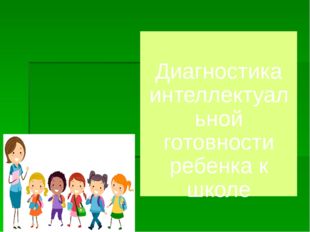
Slide description:
Slide no. 56
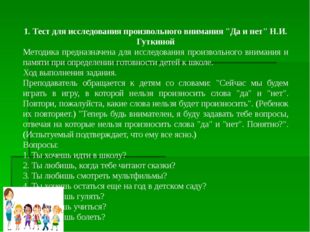
Slide description:
1. Test for studying voluntary attention “Yes and no” N.I. Gutkina Methodology is designed to study voluntary attention and memory when determining children’s readiness for school. Progress of the task. The teacher addresses the children with the words: “Now we are going to play a game in which you cannot say the words “yes” and “no.” Please repeat which words cannot be said.” (The child repeats them.) “Now be careful, I will ask you questions, answering which you cannot say the words “yes” and “no”. Is that clear?” (The subject confirms that everything is clear to him.) Questions: 1. Do you want to go to school? 2. Do you like it when people read fairy tales to you? 3. Do you like watching cartoons? 4. Do you want to stay another year in kindergarten? 5. Do you like to walk? 6. Do you want to study? 7. Do you like to get sick?
Slide no. 57
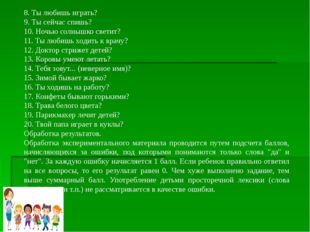
Slide description:
8. Do you like to play? 9. Are you sleeping now? 10. Does the sun shine at night? 11. Do you like going to the doctor? 12. Does the doctor cut children's hair? 13. Can cows fly? 14. Your name is... (wrong name)? 15. Is it hot in winter? 16. Do you go to work? 17. Are sweets bitter? 18. Grass white? 19. Does the hairdresser treat children? 20. Does your dad play with dolls? Processing the results. Processing of experimental material is carried out by counting points awarded for errors, which are understood only as the words “yes” and “no”. For each error, 1 point is awarded. If the child answered all the questions correctly, then his score is 0. The worse the task is completed, the higher the total score. Children’s use of colloquial vocabulary (words “aha”, “nah”, etc.) is not considered an error.
Slide no. 58
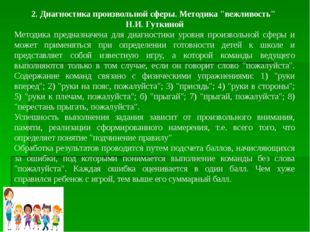
Slide description:
2. Diagnostics of an arbitrary sphere. Methodology "politeness" N.I. Gutkina Methodology is intended for diagnosing the level of an arbitrary sphere and can be used to determine the readiness of children for school and is a well-known game in which the leader’s commands are carried out only if he says the word “please”. The content of the commands is related to physical exercises: 1) “hands forward”; 2) “hands on your belt, please”; 3) “sit down”; 4) “arms to the sides”; 5) “hands to shoulders, please”; b) "jump"; 7) “jump, please”; 8) “stop jumping, please.” The success of completing a task depends on voluntary attention, memory, and the implementation of a formed intention, i.e. everything that defines the concept of “obedience to a rule” The processing of results is carried out by counting points awarded for errors, which is understood as executing a command without the word “please”. Each error is worth one point. The worse the child did at the game, the higher his total score.
Slide no. 59
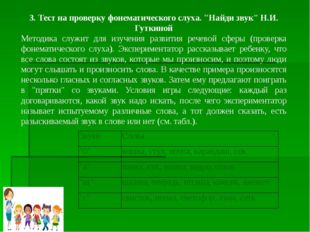
Slide description:
3. Phonemic hearing test. "Find the Sound" N.I. Gutkina Methodology is used to study the development of the speech sphere (testing phonemic hearing). The experimenter tells the child that all words are made up of sounds that we pronounce, and that is why people can hear and pronounce words. As an example, several vowel and consonant sounds are pronounced. Then he is asked to play hide and seek with sounds. The conditions of the game are as follows: each time they agree on what sound to look for, after which the experimenter calls various words to the subject, and he must say whether the sound he is looking for is in the word or not (see table). Sounds Words "0" cat, chair, mail, pencil, juice "a" stick, branch, lamp, bucket, steel "sh" hut, notebook, pants, stone, rustle "s" whistle, pencil case, traffic light, moon, network
Slide no. 60
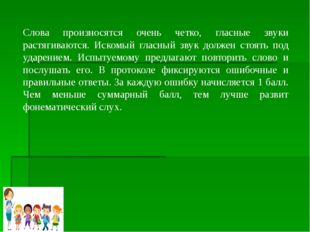
Determining a child's readiness for school
I. Methodology of A.R. Luria on determining the state of short-term memory
Prepare 10 monosyllabic words that are not directly related to each other. For example: needle, forest, water, cup, table, mushroom, shelf, knife, bun, floor, bottle.
Instructions.“I will read the words to you, and then you will repeat everything that you remember. Listen to me carefully. Start repeating as soon as I finish reading. Ready? Reading.”
Then clearly say 10 words in a row, after which you offer to repeat them in any order.
Perform this procedure 5 times, each time placing crosses under the named words, recording the results in the protocol.
Find out on which repetition the child produces the most words, and then evaluate the following characteristics of the child:
A) if reproduction first begins to increase and then decreases, then this indicates exhaustion of attention, forgetfulness;
B) the zigzag shape of the curve indicates absent-mindedness, instability of attention;
B) a “curve” in the form of a plateau is observed with emotional lethargy and lack of interest.
II. Jacobson's method for determining memory capacity
The child must repeat the numbers you named in the same order.
Instructions.“I’ll tell you the numbers, try to remember them, and then tell them to me.”
The second column is control. If the child makes a mistake when reproducing a line, the task for that line is repeated from another column.
When playing:

III. Methodology for determining concentration and distribution of attention
Prepare a sheet of paper 10x10 squares. Place 16-17 different shapes in random order in the cells: circle, semicircle, square, rectangle, asterisk, flag, etc.
When determining the concentration of attention, the child must put a cross on the figure you specified. And when determining the switchability of attention, put a cross on one figure and a zero on the other.
Instructions.“Various figures are drawn here. Now you will put a cross in the stars, but you will not put anything in the rest.”
When determining the switchability of attention, the instructions include the task of placing a cross in the figure you have chosen, and a zero in the other. Don't put anything in the rest.
The correctness and completeness of the task is taken into account. Evaluated on a 10-point system, deducting 0.5 points for each error. Pay attention to how quickly and confidently the child completes the task.
IV. A technique that reveals the level of development of the systematization operation
Draw a square on the entire sheet of paper. Divide each side into 6 parts. Connect the markings to make 36 cells.
Make 6 circles of different sizes: from the largest that fits in the cage to the smallest. Place these 6 gradually decreasing circles in 6 cells of the bottom row from left to right. Do the same with the remaining 5 rows of cells, placing hexagons in them first (in descending order of size), and then pentagons, rectangles (or squares), trapezoids and triangles.
The result is a table with geometric shapes, located according to a certain system (in descending order: in the leftmost column largest dimensions figures, and on the right - the smallest).
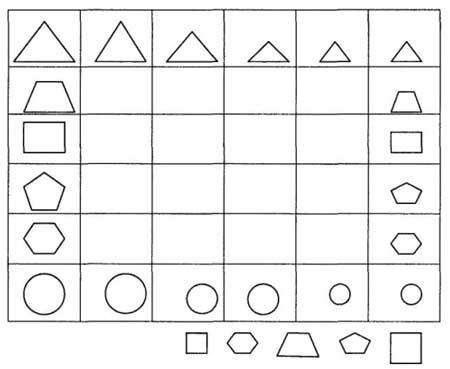
Now remove the figures from the middle of the table (16 figures), leave them only in the outer rows and columns.
Instructions."Look carefully at the table. It is divided into cells. In some of them there are figures different shapes and magnitude. All the figures are arranged in a certain order: each figure has its own place, its own cell.
Now look at the middle of the table. There are a lot of empty cells here. You have 5 figures below the table. (Out of the 16 removed, leave 5). They have their own places in the table. Look and tell me in which cell this figure should stand? Put it down. What cell should this figure be in? "
The assessment is based on 10 points. Each mistake reduces the score by 2 points.
V. Methodology for determining the ability to generalize, abstract and classify
Prepare 5 cards each depicting furniture, transport, flowers, animals, people, vegetables.
Instructions.“Look, there are a lot of cards here. You need to look at them carefully and put them into groups so that each group can be called in one word.” If the child does not understand the instructions, then repeat again, accompanying the demonstration.
Score: 10 points for completing the task without prior screening; 8 points for completing the task after the show. For each unassembled group, the score is reduced by 2 points.
VI. Methodology for determining the thinking abilities of 6-year-old children
Prepare 10 sets (5 drawings each):
1) 4 drawings of animals; one drawing of a bird;
2) 4 furniture drawings; one drawing household appliances;
3) 4 drawings of games, one drawing of work;
4) 4 drawings of ground transport, one drawing of air transport;
5) 4 drawings of vegetables, one drawing with the image of any fruit;
6) 4 clothing designs, one shoe design;
7) 4 drawings of birds, one drawing of an insect;
8) 4 drawings of educational supplies, one drawing of a children's toy;
9) 4 drawings depicting food products; one drawing depicting something inedible;
10) 4 drawings depicting different trees, one drawing depicting a flower.
Instructions.“There are 5 drawings shown here. Look carefully at each of them and find the one that shouldn’t be there, that doesn’t fit with the others.”
The child should work at a pace that is comfortable for him. When he completes the first task, give him the second and subsequent ones.
If the child does not understand how to complete the task, repeat the instructions again and show how to do it.
Out of 10 points, for each uncompleted task the score is reduced by 1 point.
VII. Methodology for identifying the level of development of figurative ideas
The child is given 3 cut pictures one by one. Instructions are given for each cut picture. The collection time of each picture is controlled.
A) Boy. In front of the child lies a drawing of a boy cut into 5 parts.
Instructions. "If you put these parts together correctly, you get beautiful drawing boy. Do it as quickly as possible."
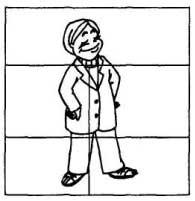
B) Teddy bear. In front of the child are parts of a drawing of a bear cub, cut into pieces.
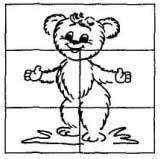
Instructions. "This is a drawing of a teddy bear cut into pieces. Put it together as quickly as possible."
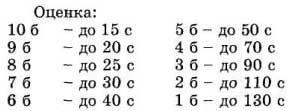
B) Kettle. In front of the child are 5 parts of a teapot drawing. Instructions. “Fold the picture as quickly as possible” (The name of the object is not given).
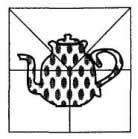
The arithmetic mean is calculated from the three estimates obtained.
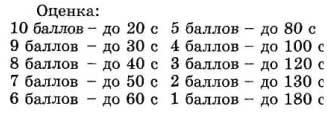
VIII. Color name as shown
Prepare 10 cards different colors: red, orange, yellow, green, blue, indigo, violet, white, black, brown.
When showing the card to the child, ask: “What color is the card?”
For 10 correctly named cards - 10 points. For each mistake, deduct 1 point.
IX. Study of the quality of sound pronunciation
Invite your child to name what is shown in the pictures or repeat after you words that contain sounds related to groups:
A) whistling: [s] - hard and soft, [z] - hard and soft
Airplane - beads - spike Hare - goat - cart
Sieve - geese - elk Winter - newspaper - knight
B) hissing: [zh], [sh], [sch], [h], [ts]
Heron - egg - knife Cup - butterfly - key
Beetle - skis - knife Brush - lizard - knife
Cone - cat - mouse
C) palatal: [k], [g], [x], [th]
Mole - wardrobe - castle Halva - ear - moss
Goose - corner - friend Yod - bunny - May
D) Sonorous: [p] - hard and soft, [l] - hard and soft
Cancer - bucket - ax Shovel - squirrel - chair
River - mushroom - lantern Lake - deer - salt
When selecting other words, it is important that the sound occurs at the beginning, middle and end of the word.
Score 10 points - for clear pronunciation of all words. Failure to pronounce one sound reduces the score by 1 point.
X. Methodology for determining the level of will mobilization (according to Sh.N. Chkhartashvili )
The child is offered an album of 12 sheets, in which there are 10 tasks. On the left side (when turning each position) there are 2 circles with a diameter of 3 cm at the top and bottom, on the right - color pictures (landscapes, animals, birds, cars, etc.).
Instructions. “Here is an album, there are pictures and circles in it. You need to look carefully at each circle in turn, first at the top one. And so on every page. You can’t look at the pictures.” (The last word is emphasized intonationally.)
Completing all 10 tasks without being distracted by pictures is worth 10 points. Each failed task reduces the grade by 1 point.
XI. Methodology that determines the level of development fine motor skills hands, analytical and synthetic functions of the brain (studied through graphic dictation and the Kern-Jerasek method)
Sample graphic dictation
The child is given a piece of squared paper and a pencil. They show and explain how to draw lines.
Instructions."Now we will draw different patterns. First I will show you how to draw, and then I will dictate to you, and you listen carefully and draw. Let's try."
For example: one cell to the right, one cell up, one cell to the right, one cell up, one cell to the right, one cell down, one cell to the right, one cell down.
“You see how the drawing turned out? Do you understand? Now complete the task under my dictation, starting from this point.” (A period is placed at the beginning of the line.)
First graphic image
Instructions. “Now listen carefully to me and draw only what I will dictate:
one cell up, one cell to the right, one cell down, one cell to the right, one cell up. One cell to the right, one cell down, one cell to the right, one cell up, one cell to the right, one cell down."
Score: for the entire task - 10 points. For each mistake, 1 point is deducted.
Second graphic dictation
Instructions. "Now draw another picture. Listen to me carefully:
one cell to the right, one cell up, one cell to the right, one cell down, one cell to the right, one cell down, one cell to the right, one cell up, one cell to the right, one cell up, one cell to the right, one cell down, one cell to the right, one cell down, one cell to the right, one cell down, one cell to the right."
Score: for all tasks - 10 points. For each mistake, 1 point is deducted.
Third graphic dictation
Instructions. "Now let's draw another pattern. Listen to me carefully:
one cell to the right, three cells up, one cell to the right, two cells down, one cell to the right, two cells up, one cell to the right, three cells down, one cell to the right, two cells up, one cell to the right, two cells down, one cell to the right, three cells up, one cell to the right."
Score: for the entire task - 10 points. For each mistake, 0.5 points are deducted.
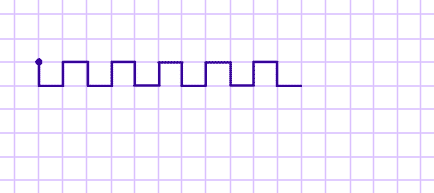
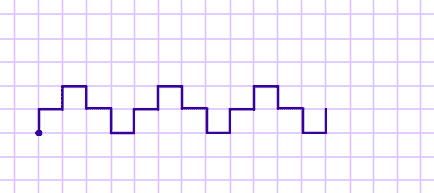
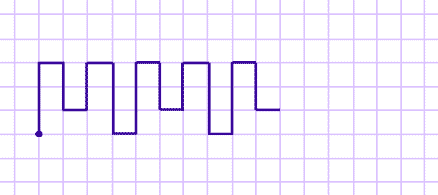
![]()
XII. Methodology for studying and assessing motor perseveration (i.e. patterned repetition of movement)
Instructions. "Look carefully at this pattern and try to draw the same one. Here (indicate where)."
The child must continue the pattern shown on the form. 10 forms are offered in turn.
For each correctly completed task - 1 point. Maximum - 10.
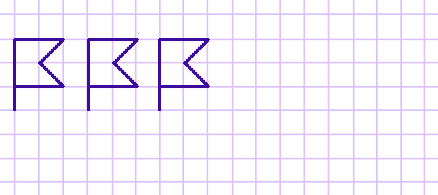
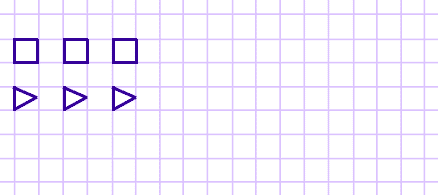
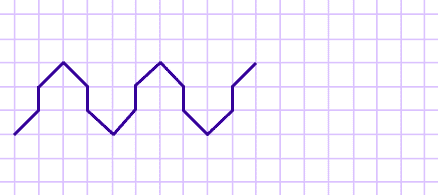
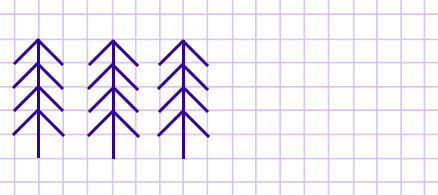
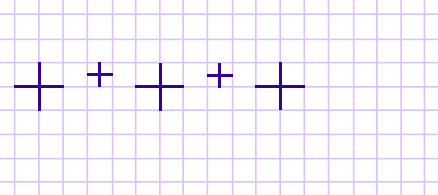
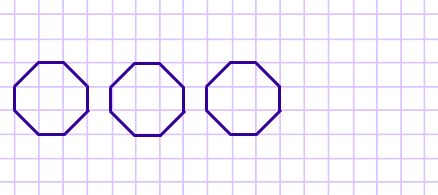
XIII. Kern-Jerasek technique
All three tasks of the method are aimed at determining the development of fine motor skills of the hand, coordination of movements and vision. All this is necessary for a child to learn to write at school. In addition, using this test in general outline can be determined intellectual development child, the ability to imitate a model and the ability to concentrate and concentrate.
The technique consists of three tasks:
1. Drawing written letters.
2. Drawing a group of points.
3. Drawing a male figure.
The child is given a sheet of unlined paper. The pencil is placed so that it is equally comfortable for the child to take it with both the right and left hand.
A. Copying the phrase “She was given tea”
A child who does not yet know how to write is asked to copy the phrase “She has been given tea,” written in written(!) letters. If your child already knows how to write, then you should invite him to copy the sample foreign words.
Instructions. “Look, there’s something written here. You don’t know how to write yet, so try to draw it. Take a good look at how it’s written, and at the top of the sheet (show where) write the same.”
7-6 points - the letters are divided into at least two groups. You can read at least 4 letters.
5-4 points - at least 2 letters are similar to the samples. The whole group looks like a letter.
3-2 points - doodles.
B. Drawing a group of points
The child is given a form with a picture of a group of dots. The distance between the points vertically and horizontally is 1 cm, the diameter of the points is 2 mm.
Instructions.“The dots are drawn here. Try to draw the same ones here yourself” (show where).
10-9 points - exact reproduction of the sample. Dots are drawn, not circles. Any minor deviations of one or more points from a row or column are allowed. There can be any reduction in the figure, but an increase is possible no more than twice.
8-7 points - the number and location of points corresponds to the given pattern. Deviation of no more than three points from a given position can be ignored. It is acceptable to depict circles instead of dots.
6-5 points - the drawing as a whole corresponds to the sample, no more than twice its size in length and width. The number of points does not necessarily correspond to the sample (however, there should not be more than 20 and less than 7). Deviation from the specified position is not taken into account.
4-3 points - the outline of the drawing does not correspond to the sample, although it consists of individual dots. The dimensions of the sample and the number of points are not taken into account at all.
1-2 points - doodles.
B. Drawing of a man
Instructions: “Here (indicate where) draw some man (uncle).” No explanations or instructions are given. It is also prohibited to explain, help, or make comments about errors. Any child’s question must be answered: “Draw as best you can.” You are allowed to cheer up the child. To the question: “Is it possible to draw an aunt?” - it is necessary to explain that you need to draw your uncle. If the child begins to draw a female figure, you can allow him to finish drawing it, and then ask him to draw a man next to him.
When assessing a person’s drawing, the following is taken into account:
Presence of main parts: head, eyes, mouth, nose, arms, legs;
The presence of minor details: fingers, neck, hair, shoes;
Method of depicting arms and legs: with one or two lines, so that the shape of the limbs is visible.
10-9 points - there is a head, torso, limbs, neck. The head is no larger than the body. On the head there is hair (hat), ears, on the face there are eyes, nose, mouth. Hands with five fingers. There is a sign men's clothing. The drawing is made in a continuous line (“synthetic”, when the arms and legs seem to “flow” from the body.
8-7 points - compared to those described above, the neck, hair, one finger of the hand may be missing, but no part of the face should be missing. The drawing was not made in a “synthetic way”. The head and torso are drawn separately. Arms and legs are “stuck” to them.
6-5 points - there is a head, torso, limbs. Arms and legs should be drawn with two lines. There is no neck, hair, clothes, fingers, or feet.
4-3 points - a primitive drawing of a head with limbs, depicted on one line. According to the principle “stick, stick, cucumber - here comes the little man”
1-2 points - lack of a clear image of the torso, limbs, head and legs. Scribble.
XIV. Methodology for determining the level of development of the communication sphere
The level of development of a child’s sociability is determined in kindergarten by the teacher during general children’s games. The more active a child is in communicating with peers, the higher the level of development of the communication system.
10 points - overactive, i.e. constantly disturbs peers, involving them in games and communication.
9 points - very active: engages and actively participates in games and communication.
8 points - active: makes contact, participates in games, sometimes involves peers in games and communication.
7 points - more active than passive: participates in games and communication, but does not force others to do so.
6 points - it is difficult to determine whether he is active or passive: if he is called to play - he will go, if he is not called - he will not go, he himself does not show activity, but does not refuse to participate.
5 points - more passive than active: sometimes refuses to communicate, but participates in games and communication.
4 points - passive: only sometimes participates in games when he is persistently invited.
3 points - very passive: does not participate in games, only observes.
2 points - withdrawn, does not react to the games of peers.
XV. Methodology for determining the state of long-term memory
Ask your child to name previously memorized words after an hour. Instructions. "Remember the words I read to you"
Score 10 points - if the child reproduced all those words. Each unreproduced word reduces the score by 1 point.
Evaluation of results
The coefficient of psychological readiness (PRC) of a child for school is determined by the ratio of the sum of assessments to the number of methods. At the same time, the CPG evaluates unsatisfactory readiness up to 3 points, weak readiness up to 5 points, average readiness up to 7 points, good readiness up to 9 points, and very good readiness up to 10 points.
To diagnose the level of thinking in a comprehensive diagnosis of a child’s readiness for school, you can use the “Elimination of the Superfluous” technique
This test is carried out to assess the child’s ability to generalize and identify significant features.
You will need a set of five cards with four objects on each.
Examples of items shown on cards:
Nonsense Method
To diagnose the level of thinking in a comprehensive diagnosis of a child’s readiness for school, you can use the “Nonsense” technique
To complete this test, a child must have a good outlook, be observant, be able to reason logically and express his thoughts correctly.
You have 3 minutes to complete the test (view the picture and answer the child). The task is performed sequentially: first you need to name and show all the absurdities found, and then explain how it should really be (Fig.).
Diagnosis of a child's memory
Diagnostics various types memory
Test "10 words"
This test will help assess the level of the child’s auditory memory, the development of which is very important, because the student will have to perceive a lot of information by ear. In addition, to successfully complete the test, the child needs to “switch on” voluntary (regulated by himself) attention: it must be stable and concentrated.
The child needs to be told: “I’ll now read the words that you need to try to remember, and then repeat.”
Diagnosis of child attention
Let's check how a child's attention works
One of the most frequently used adverbs in parting words to a child is “carefully.” “Listen to the teacher carefully!”, “Write carefully!”, “Look carefully at the road!” - and we accompany many other wishes with the word “carefully”. Our desire for a student to be attentive does not always coincide with reality. This is why so many parents turn to psychologists with complaints that the child is inattentive and absent-minded. Fortunately, attention can be developed, but first we’ll still try to figure out what your child’s attention is at the moment.



